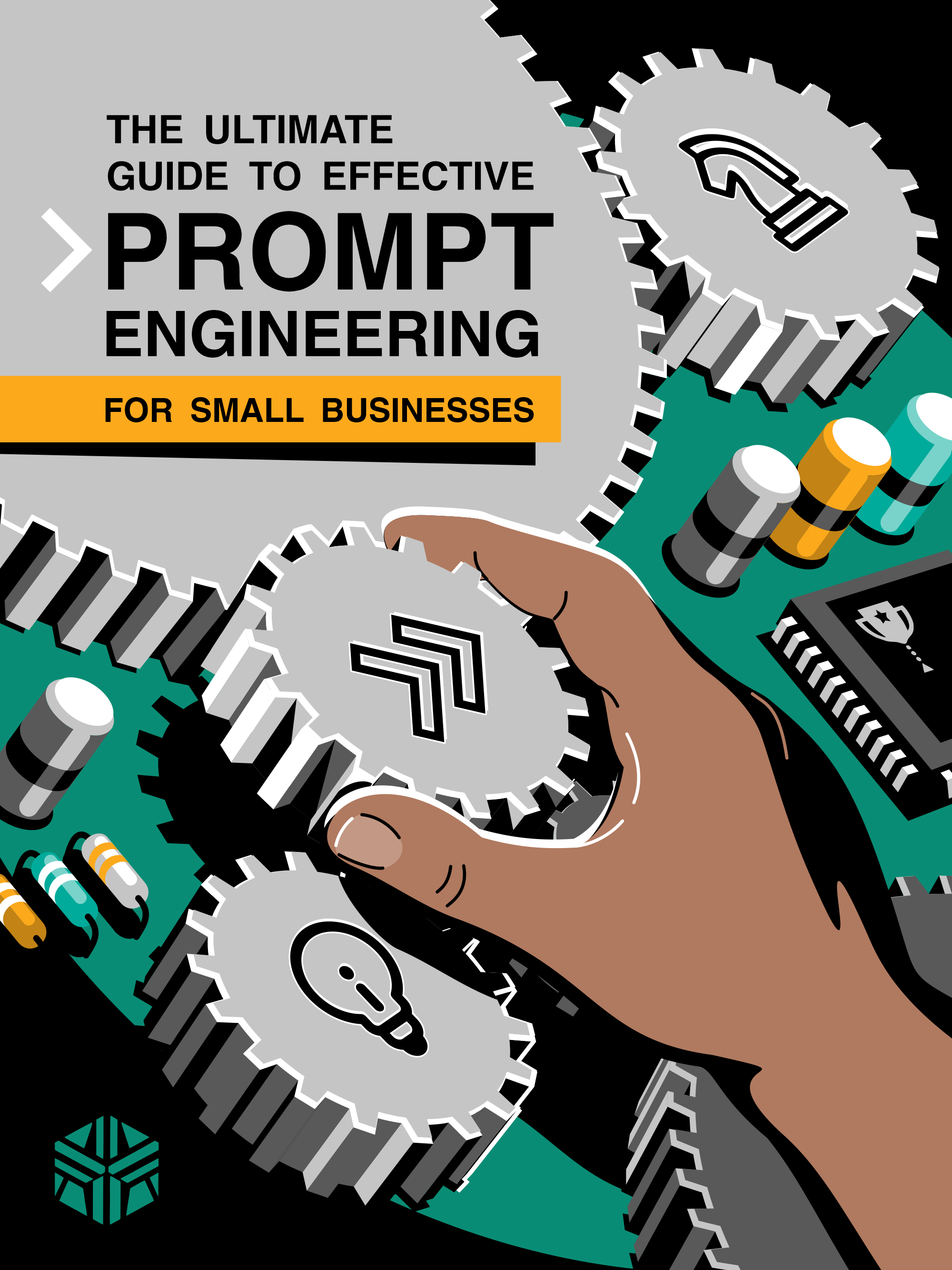Effective Prompt Engineering for Small Businesses
Crafting effective prompts is the secret to creating great ChatGPT content. Written with small business owners in mind, this AIPRM guide covers the basics and shows you how get the most out of ChatGPT.
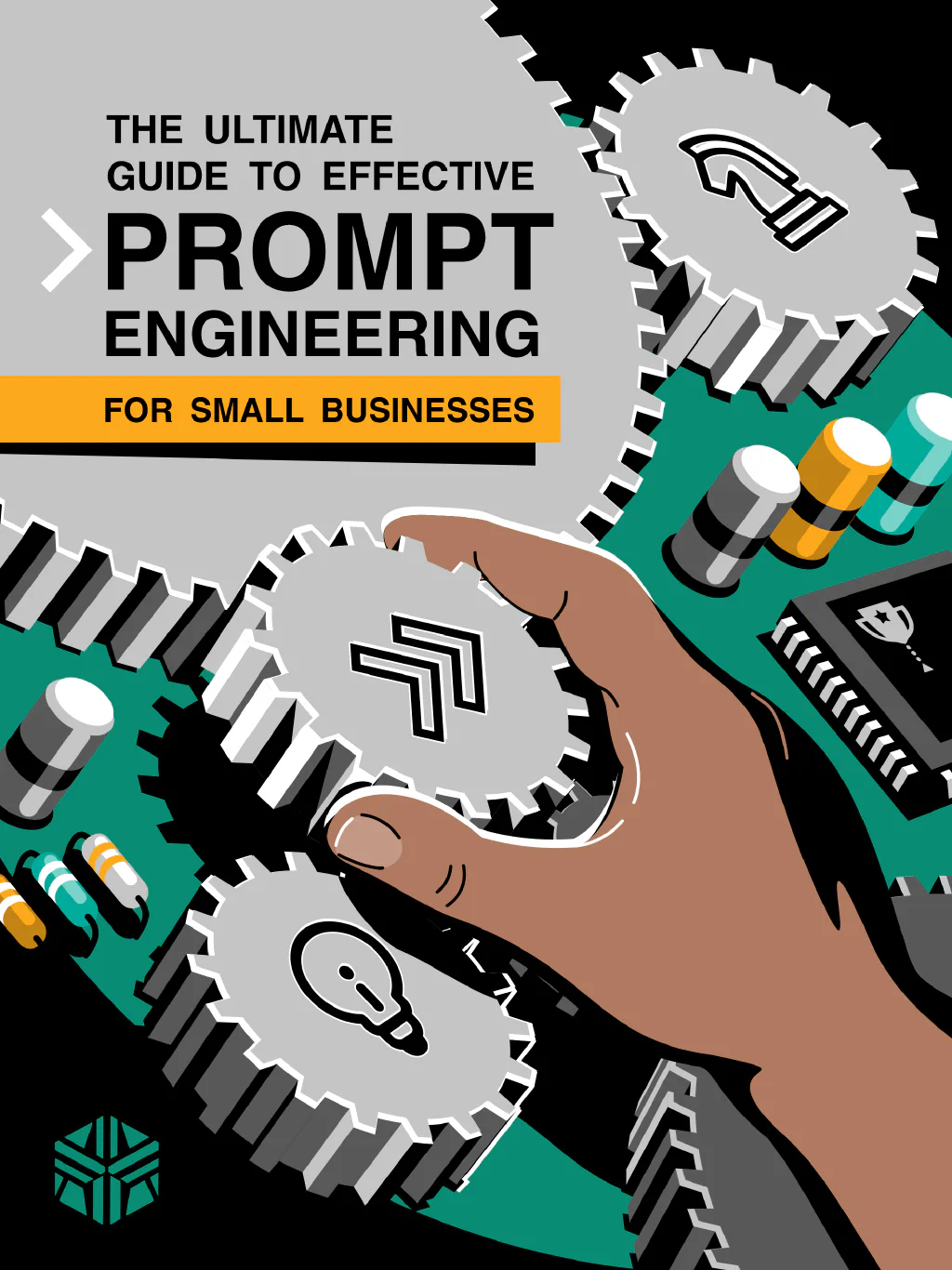
Most small businesses are oblivious to what AI tools can do for them. Not you. You’re here because you understand the opportunity, but you need to find a way to leverage them quickly and efficiently.
Over the past year, ChatGPT has become a mainstream AI tool. You’re doing your research. Figuring it out. Maybe you’ve struggled to find prompts that can accomplish what you need. You’re not looking for shortcuts. You’re looking for smart processes that can help your marketing, sales, customer support, and productivity without blowing through your budget.
And if you need a place to craft, organize, and manage your prompts, AIPRM is the Prompt Management Tool that will allow you to effectively use ChatGPT professionally.
If you run into any terms that you’re not familiar with, check out the Generative AI Glossary.
Let’s get you the framework you need to build prompts specific to your small business that you can use over and over again.
The How and the Why Behind Prompt Engineering #
When you start using ChatGPT or any chatbot that leverages a Large Language Model (LLM), you’re confronted with a blank screen. It’s like a Photoshop canvas. You can write literally anything. And no, we’re not here to plan a trip to Norway or start a film club.

You’re here to learn how to communicate with the chatbot. To engineer prompts.
Prompts are the set of instructions for the chatbot to generate human-like text. It’s what you write to ChatGPT to get the output you need for your small business.
Prompt Engineering is the skillful art of crafting the perfect question or command to get a computer program, especially a text-based one, to do exactly what you want.
Familiar with the term: garbage in, garbage out?
Below are two distinct examples of prompts for the task of creating a social media marketing strategy for a small local organic juice bar.

Example 1: A Poorly Engineered Prompt
Hey, we have a local juice bar. We want to grow on Instagram and appeal to health enthusiasts. Can you suggest vibrant and fun post ideas to showcase our juices?
Example 2: A Well-Formatted, Detailed, Expertly Engineered Prompt
Role:
ChatGPT, you are a seasoned social media strategist with a background in nutrition and wellness. You are tasked with creating a nuanced social media marketing strategy for a small and vibrant local organic juice bar.
Context:
- Business: FreshVibe Organic Juice Bar, a local business championing organic farming by offering juices made from 100% locally sourced organic ingredients.
- Brand Voice: Energetic, vibrant, and passionately health-conscious.
- Target Audience: Health enthusiasts and local residents aged 20-35, who value organic, fresh products and are willing to invest in their wellbeing.
- Goal: To increase brand awareness and foster a community of loyal customers through engaging and informative content.
Task:
Develop a detailed social media marketing strategy for Instagram that includes:
- A monthly calendar outline for Instagram (just the themes).
- Types of posts (e.g., Stories, Reels, IGTV) and their frequency per week.
- Ideas for collaborations or partnerships.
- Hashtag strategy: List of hashtags to leverage the organic reach.
Example Output:
- Weekly Themes:
- Monday: “Meet the Farmer” series
- Wednesday: Recipe Reveal
- Friday: Customer Spotlight
- Post Types and Frequency:
- Stories: Daily updates featuring behind-the-scenes, and snippets from our juice bar.
- Reels: 3 times a week showcasing quick juice recipes.
- IGTV: Bi-weekly deep dives into the benefits of different ingredients.
- Collaborations:
- Local Fitness Centers: Juice bar pop-ups and special discounts for members.
- Influencers: Engage local health & wellness influencers for sponsored posts.
- Hashtag Strategy:
- #FreshVibeJuices
- #LocalOrganic
- #WellnessWednesday
Constraints:
- Originality: Ensure the ideas are fresh and haven’t been overused in the industry.
- Language: Maintain a vibrant and energetic language consistent with the brand voice.
- Specific Vocabulary: Incorporate terms like “farm-fresh”, “organic”, and “locally sourced” to highlight the USP of the business.
- Compliance: Align all strategies and posts with the brand’s values and guidelines, ensuring to promote healthy and realistic expectations from the product.
The output of these prompts is directly tied to what you put in. It’s like giving directions to a 5-year-old. If you’re not incredibly specific and literal, they’re going to misinterpret the assignment.
Creating the right question or set of instructions for a computer program to follow isn’t always easy. Think of it like giving directions: you want to be clear and specific to get the outcome you’re looking for.
Understanding how to build these prompts will fundamentally improve the output. There are nuances and tips that you’ll be able to use to reduce the trial and error required to improve your instructions.
Creating the perfect prompt isn’t a perfect science.
Technically speaking, a prompt serves as the input that calibrates the machine-learning model to perform a specific function. However, devising the right prompt often leans more towards artistry than exact science, relying on a blend of expertise and instinct.
This guide aims to kickstart your journey in understanding this nuanced skill. While the principles discussed are broadly relevant to all GPT variants, keep in mind that each model has its unique characteristics, making some recommendations more applicable to certain versions than others.
Different Types of Large Language Models #
Versions of GPT (GPT-3.5, GPT-4) may be the most popular models. However, there are other LLM alternatives such as Claude 2 by Anthropic, Llama 2 by Meta, or PaLM 2 by Google.
LLMs are shaped by their training data, much like students trained at different universities, each with unique coursework. Each LLM, be it GPT-4, PaLM, or others, has its distinct strengths and weaknesses.
It’s hard to say which one is the best since It’s difficult to measure the performance of LLM. Researchers have designed a program called MMLU (Massive Multitask Language Understanding). It’s a set of tests to measure LLM language understanding. It covers 57 subjects from STEM, social sciences, US History, and more. The models are tested on both world knowledge and problem-solving ability.
Currently, ChatGPT’s GPT-4 ranked number 1 in the MMLU test. However, that doesn’t definitively make it the best LLM. See the attributes of the various models in the table below.
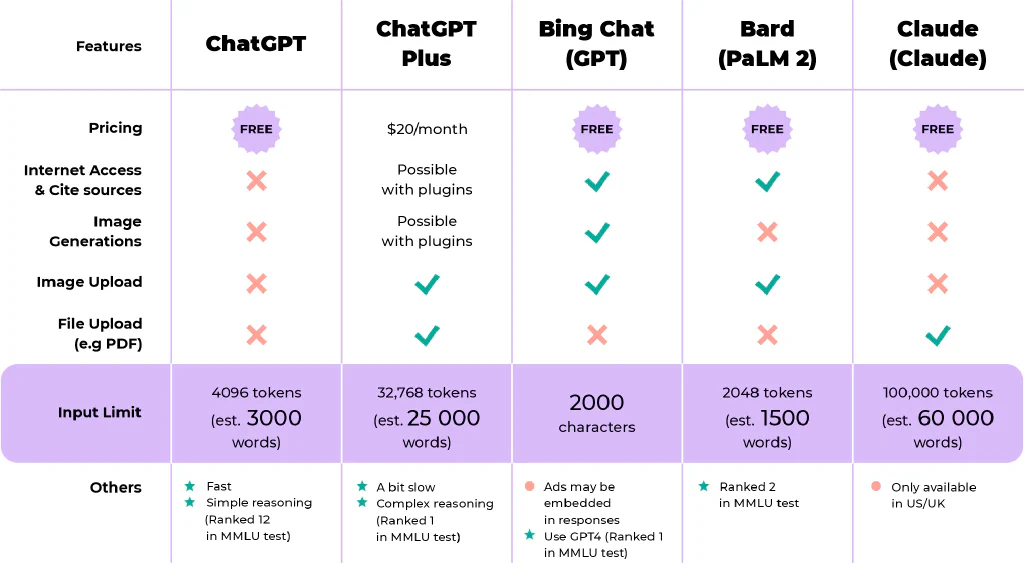
Since they’re trained on different data, they respond differently to the same prompt. Instead of testing and refining your prompt for each platform, you can still use a proven prompt for each LLM from a prompt library like AIPRM.
OpenAI, Microsoft, and Google have built chatbot interfaces on top of their LLMs, to make the models more accessible to non-developers. However, developers can access the LLMs via API to create their own customized chatbots.
While many of the LLM APIs are paid solutions, there are a growing number of open-source LLMs such as LLama 2 by Meta AI.
Open source means its code is publicly available. Hence, giving you more transparency and flexibility in customizing the model. You will also be able to host the model by yourself. Giving you better privacy. Additionally, you will not be restricted by the licenses and policies that closed models often have. However, these models are not as accessible as ChatGPT and you may need a developer or coding knowledge to use it.
Choosing your chatbot #

Your preferences will likely be influenced by the output, price, and accessibility of the tools, but there’s no wrong solution. To choose the best chatbot for your needs. You should consider several factors:
Cost #
When evaluating the cost of implementing an LLM or chatbot for your small business, consider the following critical questions:
- Budget Alignment: Does the pricing of the chosen chatbot align with your budgetary constraints, ensuring that the cost is sustainable for your business?
- Utilization Strategy: How precisely do you intend to utilize the LLM or chatbot within your business operations to optimize its value and justify the expense?
- Subscription Requirements: Does each employee in your organization require an individual subscription, and is this a viable option, especially considering the availability of an Enterprise version of ChatGPT?
- Customization and Extra Costs: Are you prepared to allocate additional resources, whether in the form of tools or developers, to customize the LLM or chatbot for specific business needs and additional features?
- Budget Scaling: Recognizing that larger organizational involvement may necessitate a larger budget, are you equipped to efficiently manage costs within the context of a smaller business, ensuring that cost-effective strategies are in place to maximize tool utility?
These questions serve as a crucial framework for assessing the financial feasibility of integrating LLMs or chatbots into your small business, enabling you to make informed decisions about both the initial investment and ongoing operational costs.
If your budget is limited and you choose not to upgrade to ChatGPT Plus, you may want to try other chatbot options for the features that free ChatGPT lacks. For example, Bing Chat, Perplexity, and Bard’s ability to search the web and provide sources in its answers is very useful for doing research.

Claude and Bard are suitable for analyzing documents since they include the ability to upload files and receive large amounts of text.
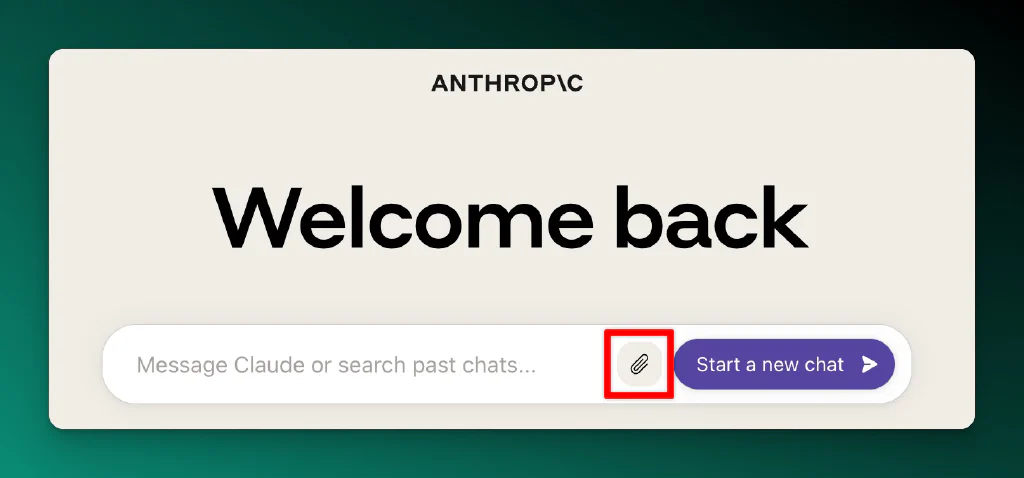
Effectiveness #
- What tasks do you need the chatbot for?
- Does the chatbot have the necessary features for those tasks?
Across many forums and communities, the consensus is that GPT4 delivers the best content creation performances. Academically, this is confirmed based on the language understanding test (MMLU benchmark) ( source).
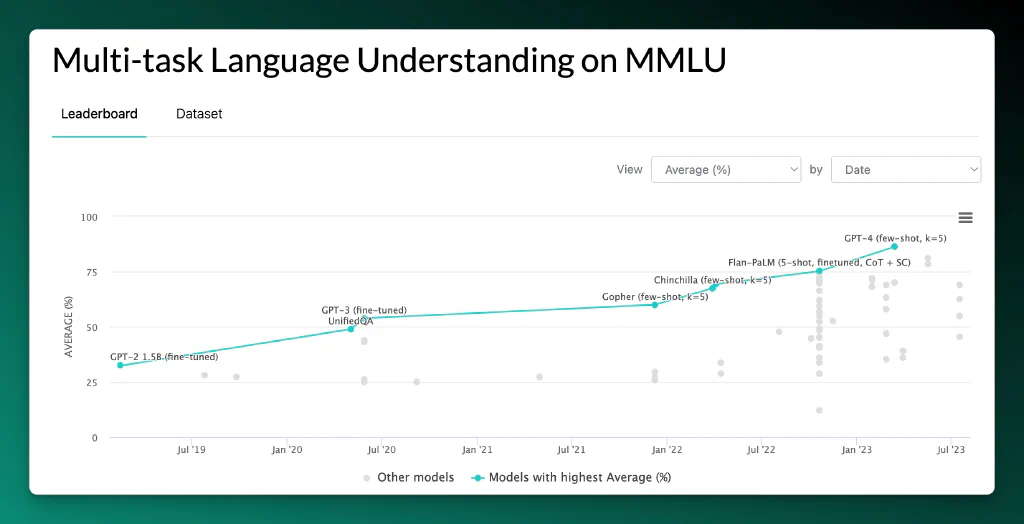
To ensure the effectiveness of a large language model (LLM) for small businesses, consider the following key questions:
- What specific tasks and purposes will the LLM, such as a chatbot, be employed for within the business?
- Does the chosen LLM possess the necessary features and capabilities to fulfill these identified tasks effectively?
- Is there a preference for the latest model version, like GPT-4, which is recognized for its superior content creation abilities and validated through language understanding tests such as the MMLU benchmark?
- Are there any integrated 3rd-party plugins available to enhance the LLM’s functionality, such as image generation, file uploads, or web searches, and how do they compare to alternative tools like Bing Chat, Claude, and Bard, which may offer similar features independently of third-party integrations?
These questions will guide small businesses in selecting and configuring an LLM to best suit their needs and objectives.
Accessibility, Integrations & Customization #
Small business owners need to think about how easy the solution is to use, how well it works with their current tools, and how much they can adjust it to fit their specific needs when considering LLMs or chatbots.
Make sure the LLM platform is user-friendly and can be smoothly integrated with your existing software and systems. Also, check if it can be customized to match your unique business requirements. This way, you can provide personalized customer interactions without breaking the bank.
Considering these factors, alongside your budget, will help small business owners get the most out of their LLM investment.
Some LLMs like Llama or the ChatGPT API are less accessible to non-developers since a bit of computer knowledge to use them is required. However, they also open up more features, customization, and further integration opportunities. For example, you can customize GPT-4 to your own data through the fine-tuning API. Or you can host your own chatbot using Meta’s Llama 2 if privacy is crucial for your business.
Scalability #
Consider whether the chatbot can scale with your business growth. If your usage increases, can the chatbot handle higher demand without compromising performance?
AIPRM Prompt Management #
AIPRM works on top of ChatGPT. We’ll discuss how you can save, manage, and share your prompts with your team later in this guide. But AIPRM can power up your Prompt Engineering features that add features that allow you to use your prompts more seamlessly.
Training Data Limitations #
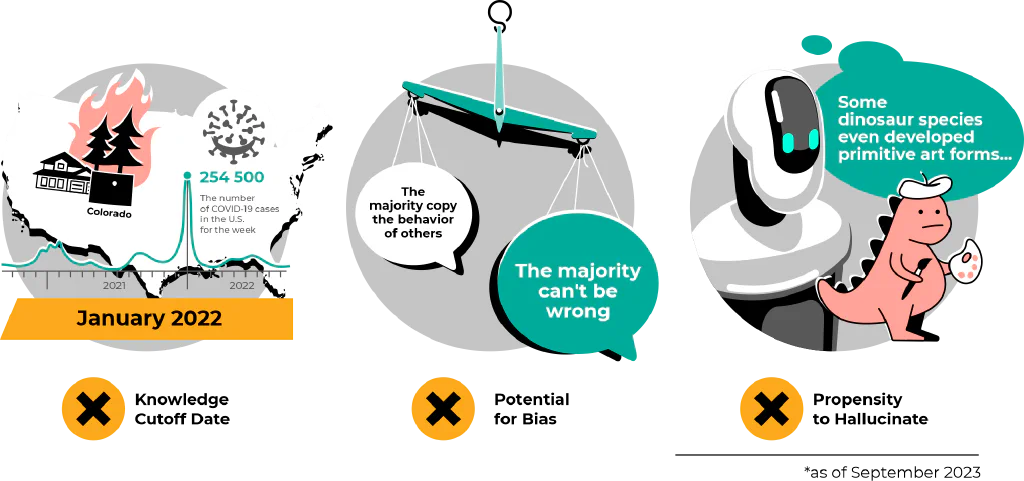
Small business marketers should prioritize a thorough consideration of the limitations associated with training data when employing large language models.
These models heavily rely on the quality and diversity of their training data, and if it’s insufficient or biased, it can significantly impact marketing outcomes. It’s vital to comprehend these limitations to ensure that the language model generates accurate and relevant content that aligns with the specific objectives and target audience of the business.
By doing so, marketers can avoid potential pitfalls, such as misrepresentations or unintended biases, which may arise due to inadequacies in the training data. This awareness empowers marketers to harness the full potential of these models effectively.
Age of Training Data #
Depending on the training data, each LLM has limitations. Returning to our specialist analogy, imagine if your specialist studied only up to the year 2022. They’d be unaware of trends or events after that. This is the limitation of training data. ChatGPT only has access to up to January 2022* data at the time of publishing of this guide.
*Originally it was September 2021 but has since been updated. It may be updated again in the future.
However, you can overcome this limitation by using a plugin, Bard, Bing, or the AIPRM live crawling feature.
AIPRM’s Live Crawling takes a URL, collects the text from that URL, and then primes the ChatGPT with the content to integrate into the prompt you submit.
Learn how you can use live crawling with ChatGPT
The training data inevitably will have biases. Imagine ChatGPT is like a student who’s crammed for a test using lots of books. If most of those books talk mainly about one topic, then that student will think that topic is super important and might forget about other stuff. That’s one type of “bias”.
Bias #
If ChatGPT has seen a lot about one topic, it might lean towards that when giving answers. When content in the training data has a strong perspective, the GPT models don’t know the objective truth. It can’t take perspectives with a grain of salt. Those perspectives are baked into the generative answer.
Let’s say a business owner, Ms. Holiday, runs a cool toy store and wants to know how to get more customers.
She asks ChatGPT, “What’s the best way to advertise a toy store?” Since ChatGPT has seen a lot of content about online ads, it might suggest, “Use online ads on websites and social media!” But in Ms. Holiday’s town, most people still watch TV and don’t use social media much.
A TV commercial during kids’ showtime might work way better. So, ChatGPT’s answer is a bit “biased” because it learned so much about online content and might not always get local factors right.
Your own prompts could result in a biased response from ChatGPT.
Example Bad Prompt (that could lead to bias):
“Why are online advertisements the best method for promoting a local business?“
This is a leading question, implying that online advertisements are indeed the best method, even if they may not be in certain scenarios. The response from ChatGPT could then be biased towards justifying why online advertisements are superior, even if that’s not universally true.
Good Prompt (more neutral and avoids bias):
“What are the pros and cons of online advertisements for promoting a local business?“
This prompt is open-ended and doesn’t assume one method is the best. It allows ChatGPT to provide a balanced view, covering both the advantages and disadvantages of online advertisements for local businesses.
Best Prompt (actively prevents bias):
“Act as an online advertising specialist. Create a list of pros and cons for promoting a local business with online advertising. Before you answer, ask me for specific information about my business that would help provide a more personalized and helpful answer”
In this optimized prompt, we’re avoiding a generalized answer and providing additional context or framing the LLM to ask for additional information that would provide a less biased output.
Hallucinations #
In large language models, hallucinations occur when they generate inaccurate or fictional information that may sound plausible but lacks factual basis. This poses a significant problem for small businesses relying on these models for content creation, as it can lead to misinformation, damage brand credibility, and misguide customers. To address this issue during the editing process, marketers can:
- Fact-check and verify: Independently verify the information provided by the LLM to ensure accuracy and reliability.
- Cross-reference with trusted sources: Compare the generated content with reputable sources to confirm its validity.
- Apply human expertise: Leverage subject matter experts or experienced editors to review and refine the content, correcting any hallucinations or inaccuracies to maintain content quality and integrity.
Language #
Since the training data contains multiple languages. Some LLMs like GPT-4 can also understand other languages. But its performance in other language may be worse than in English as the majority of its training data are in English. It also may only work for popular languages as it doesn’t have enough data on more obscure languages.
If you are dissatisfied with the training data limitations. ChatGPT recently made fine-tuning GPT-3.5 available on August 22, 2023. This allows you to customize the LLM further according to your dataset and user. However, the fine-tuning currently can only be done through the ChatGPT API.
Text-based vs. Multi-Modal (images and videos) #
Imagine you’re a home services pro, Mr. Jackson. Your potential customer, Mrs. Green sends you a picture of her leaky faucet along with a text explaining the problem. This visual helps you understand the problem.
In response, you replay with a DIY video for a fix. It’s similar to ChatGPT and multi-modal prompts. Instead of just text, you can use images or videos to give ChatGPT a clearer picture of your query, just like the faucet photo helped Mr. Jackson.
This multi-modal feature is possible after OpenAI released GPT4 in March 2023. It can receive an image or video and understand its content. This opens up new possibilities for using LLM. For example, you can just upload an Instagram image and ask GPT4 to generate a caption for it directly. Upload a product image and ask ChatGPT to write a compelling product description. Or for customer support when the customers upload an image about their issue.
To use the ChatGPT ‘seeing’ capability, you can use the SceneXplain plugin. The plugin feature is only available on the ChatGPT Plus plan. If you have the plan, make sure you enable the beta feature in the settings.

Then, when creating a new chat, choose GPT-4 and with plugins enabled.
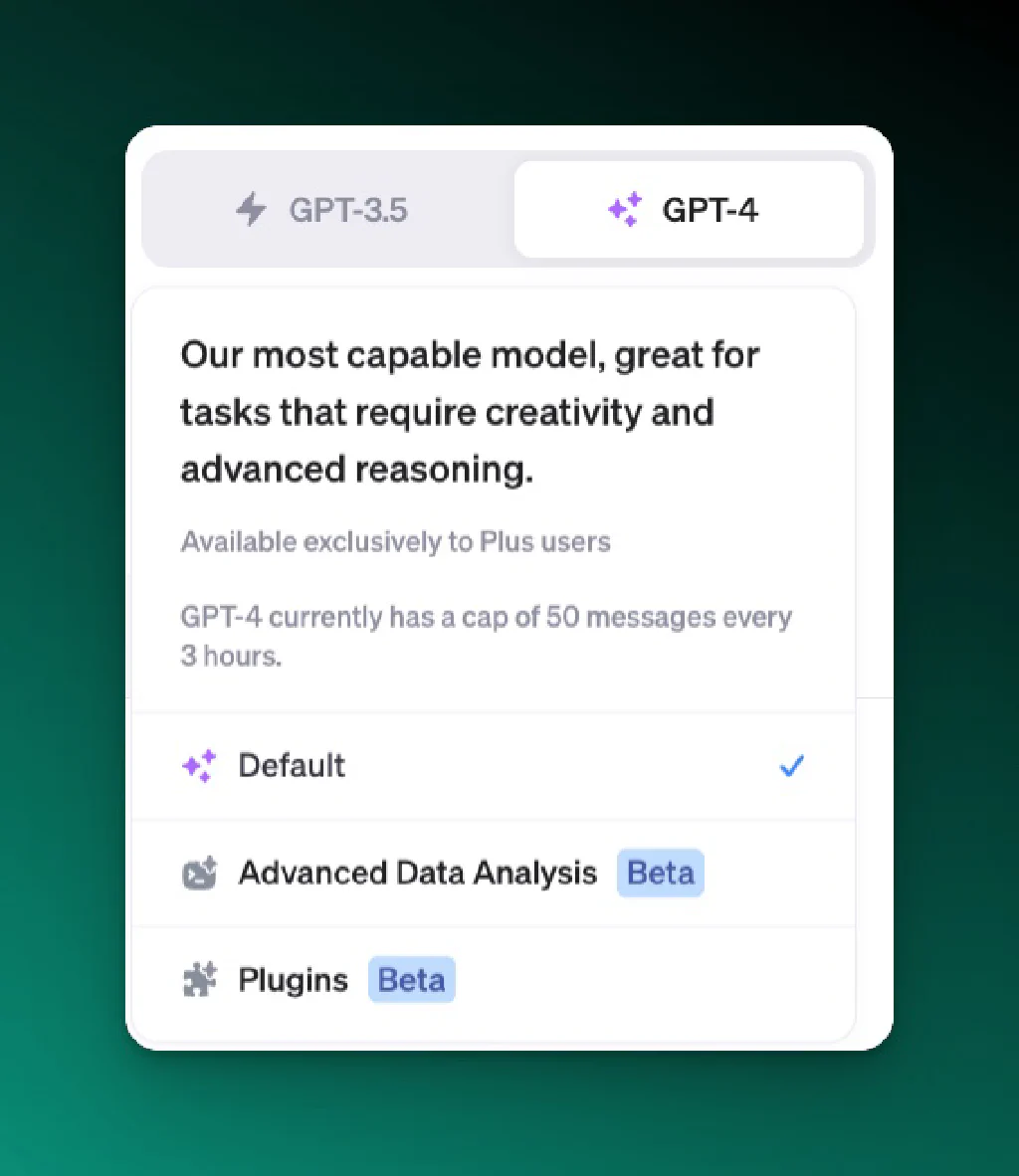
Once you installed the SceneXplain plugin, there will still be no upload image button. But you can put the image URL in the prompt.
Here is an example:

A photo from Pexels.
The prompt:
Write an Instagram caption for this photo:
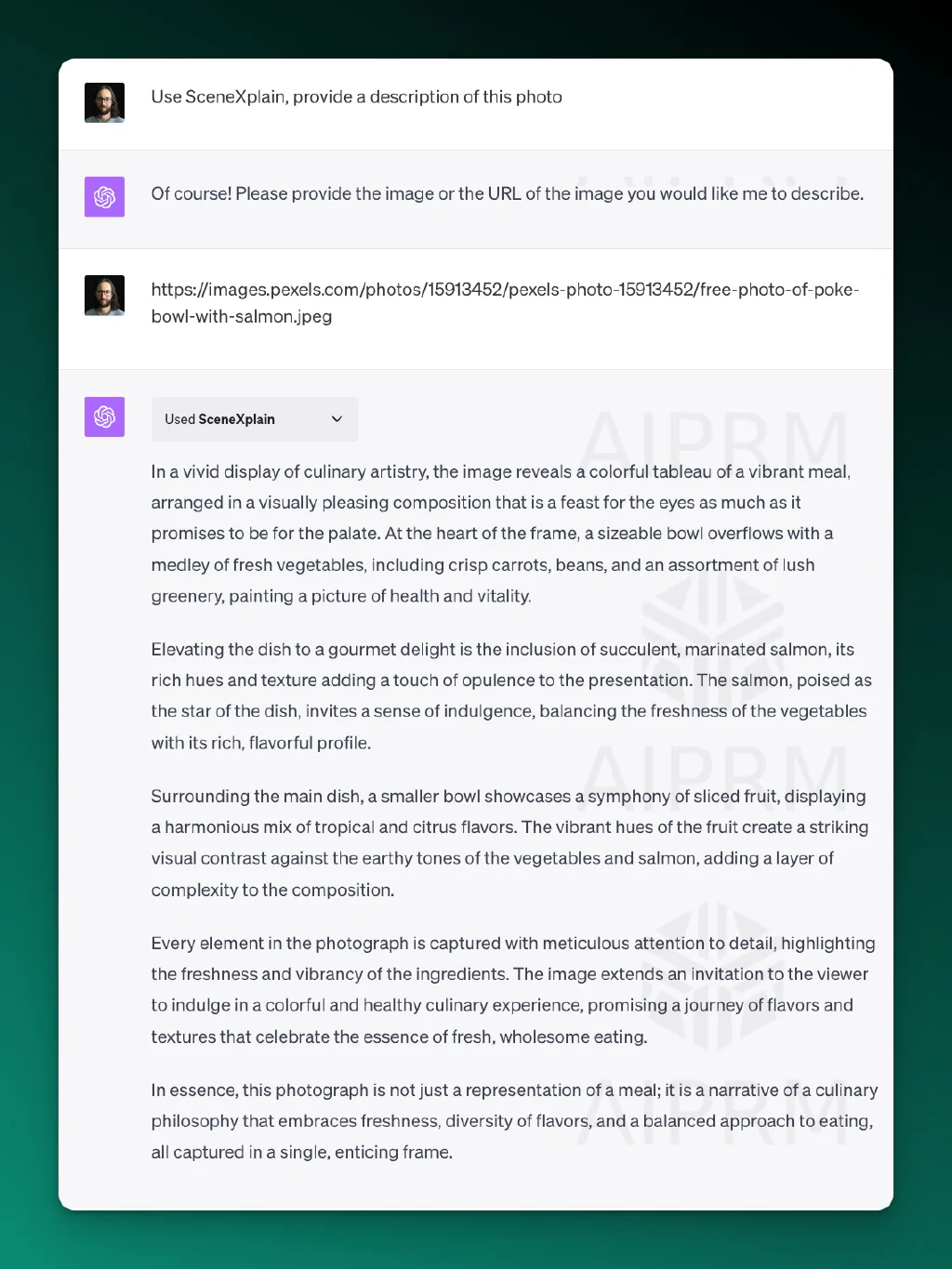
Note: ChatGPT Plugins are part of ChatGPT Plus and are only available to paid users. You can use Bing Chat, Claude, or Bard as a free alternative for image upload.
Besides using the ChatGPT plugin, you can also use the Advanced Data Analysis feature (previously known as Code Interpreter).
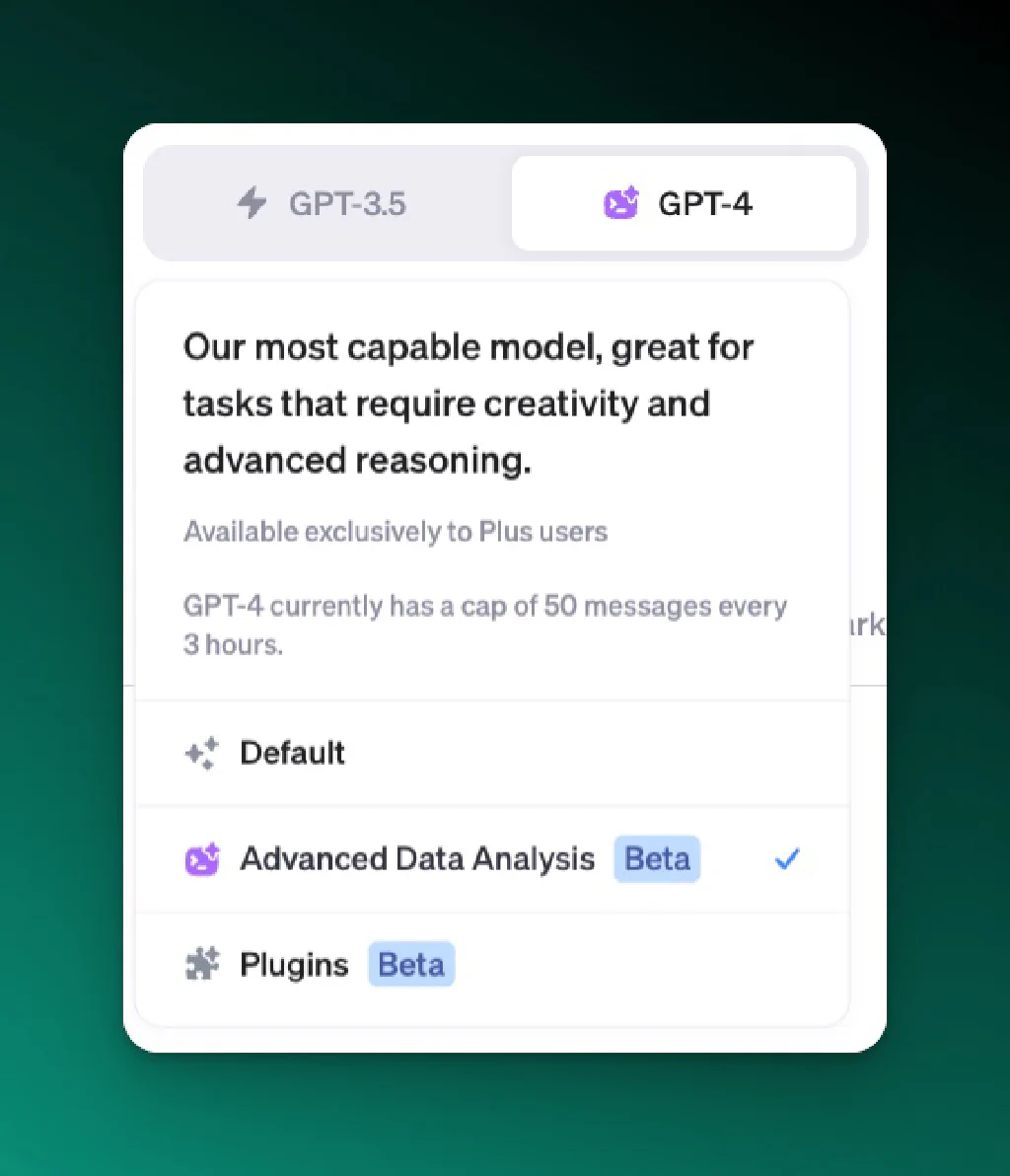
The feature allows you to upload any image or file. Either by drag and drop or using the ‘+’ button. However, this feature works best for analyzing textual data. Although it can do image edits such as resizing or cropping, it can’t really ‘see’ the image at the moment.
For generating images or videos, you can use a plugin such as Argil or MixerBox ImageGen in ChatGPT. With ChatGPT’s advanced analysis feature, you can also generate plot graphs from document files. Alternatively, Bing Chat also has a built-in image generator using Dall-E 3. However, a specific image generator service such as Midjourney might give you a better result.
Principles of Prompt Engineering for Small Business Marketers #

At its core, prompt engineering is about crafting the right kind of questions or statements to guide your chatbot in generating meaningful and relevant responses.
Leveraging comprehensive and contextual prompts in your communication strategy is akin to providing a roadmap to effective dialogue. Such prompts guide AI systems in generating responses that are not just accurate, but also rich and meaningful.
A well-crafted prompt draws from a wealth of context to offer nuanced and detailed responses, steering the conversation in a direction that adds value for your audience. It’s about giving your AI the best possible starting point to ensure a worthwhile and valuable output.
So what does that look like in practice?
- Clarity is Key: First and foremost, prompts should be clear and unambiguous. This means avoiding industry jargon and using simple, direct language that both the AI and your end users can understand.
- Context Matters: When building a prompt, context is your best friend. Provide sufficient background information to guide the AI in generating relevant and coherent responses. Think of it as setting the stage for a productive conversation.
- Set the Right Tone: Ensure the prompt reflects the tone you want the AI to adopt. Whether it’s formal, friendly, or conversational, the initial prompt should clearly convey this to help maintain a consistent communication style.
- Brevity with Completeness: While being concise is vital to keep the user engaged, it’s equally important to ensure that the prompt encapsulates all the necessary details to fetch a comprehensive response.
Prompt Types and Use Cases #
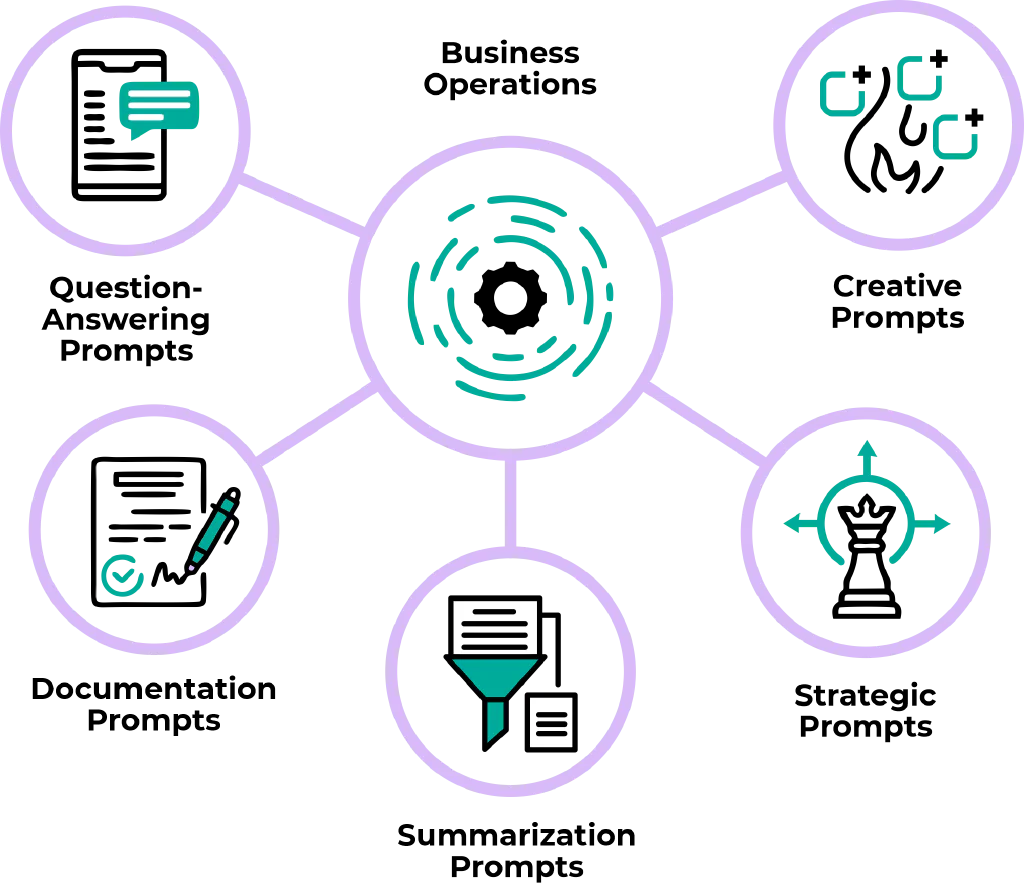
Small businesses can leverage various types of prompts when using LLMs, such as ChatGPT, to enhance their planning, strategy, and execution processes. Picture these prompts as the guiding hand that directs your AI assistant.
- Question-answering prompts become your go-to when you need swift responses to customer inquiries, allowing you to plan better for customer support.
- Creative prompts are the spark that ignites content creation. They’re like your secret weapon for generating captivating blog posts and social media updates as part of your marketing strategy.
- Summarization prompts play a strategic role by condensing extensive data into manageable chunks. They help in executing tasks like research and data analysis effectively.
Prompts also exist to support small businesses in strategizing and creating documentation:
- Strategic prompts guide your thinking and help you formulate strategies. They’re like a brainstorming partner, assisting in devising plans and tactics that align with your business goals.
- Documentation prompts become your writing assistant when you’re creating manuals, reports, or any form of documentation. They ensure that the information is structured, clear, and well-documented, which is essential for record-keeping and maintaining a strategic overview of your business activities.
The key here is selecting the right prompt to align with your planning, strategy, and execution objectives. It’s all about tailoring your instructions to fit the task at hand. These prompts serve as invaluable tools that can make your business operations more efficient and ultimately lead to better outcomes.
Prompt Use Cases By Activity #
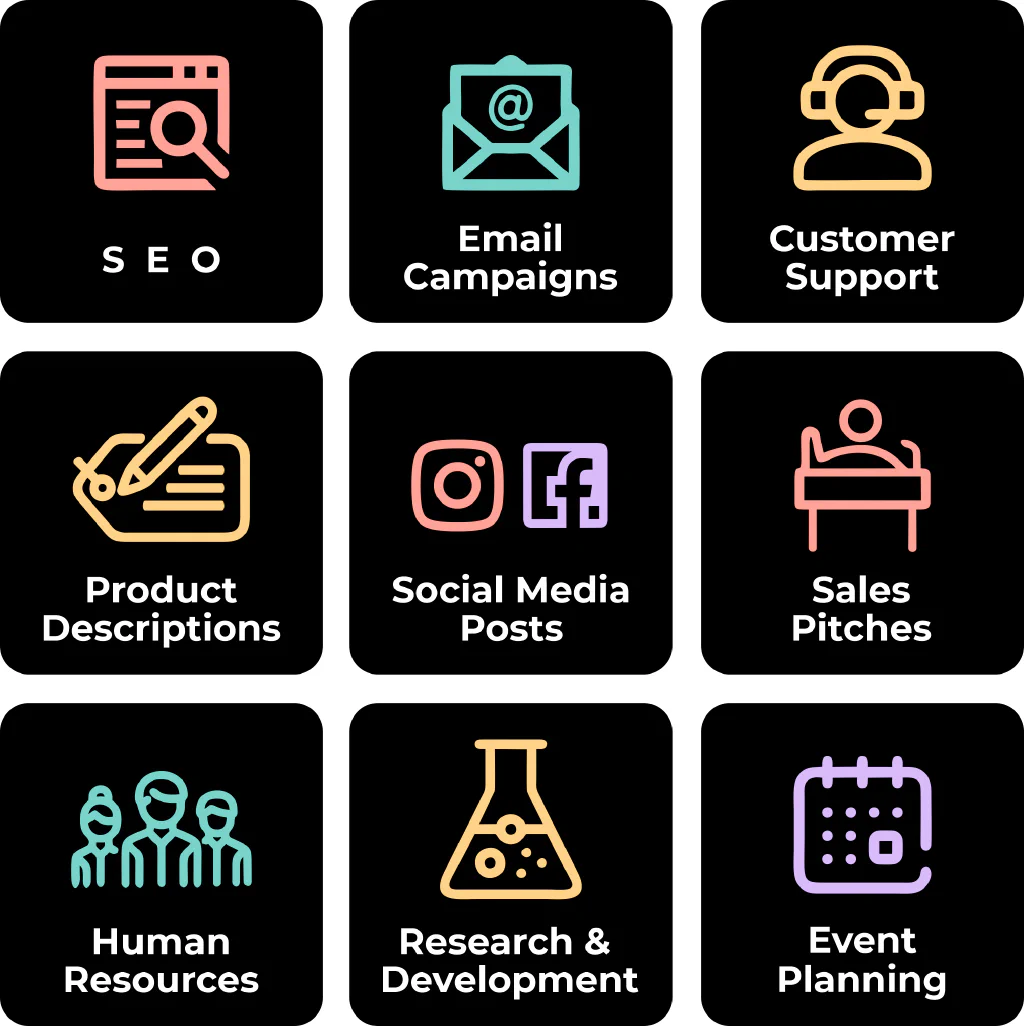
Tailoring your prompts to specific tasks can greatly enhance the results you get from ChatGPT. Here are 9 different activities across departments and how they can benefit:
-
SEO Optimization: Craft prompts to generate keyword-rich content, helping your website rank higher in search results. If you’re in the home service industry, you might build prompts to help you improve your Roofing Services page with the reasons a customer should hire you.
-
Email Campaigns: Design prompts to create engaging email subject lines and content, increasing open rates and conversions. A local bookstore might have an ongoing email newsletter campaign that recommends books to the target audience.
-
Customer Support: Develop prompts to assist in generating quick and accurate responses to common customer queries. If you’re an online toy store, maybe you use prompts to create thoughtful email replies to happy or frustrated customers.
-
Product Descriptions: Create prompts that produce detailed and enticing product descriptions, enhancing online sales. Fashion retailers can create prompts that make their products more appealing for a given season.
-
Social Media Posts: Formulate prompts to craft catchy social media captions and posts, boosting engagement. Restaurants can generate prompts for Instagram captions.
-
Sales Pitches: Design prompts to help draft persuasive pitches, improving the chances of closing deals. Through scripts or emails, an insurance agency can build prompts that include the hook, value prop, and CTAs that are ideal for your sales team.
-
Human Resources: Use prompts to assist in crafting job descriptions, interview questions, or employee feedback. Accounting firms can build out processes for the HR team to get projects completed on time.
-
Research & Development: Generate prompts to summarize research findings or brainstorm innovative product ideas.
-
Event Planning: Craft prompts to help with event agendas, invitations, or promotional content, ensuring successful events. If you’re a brewery collaborating on a local event, prompts can help to promote the event with marketing collateral.
Remember, no matter the department or task, setting your prompt objective clearly can make a significant difference in the outcomes.
For a comprehensive set of pre-built prompts and use cases, check out:
AIPRM’s The Complete Guide to ChatGPT for Small Business Owners
Prompt Use Cases By Industry #
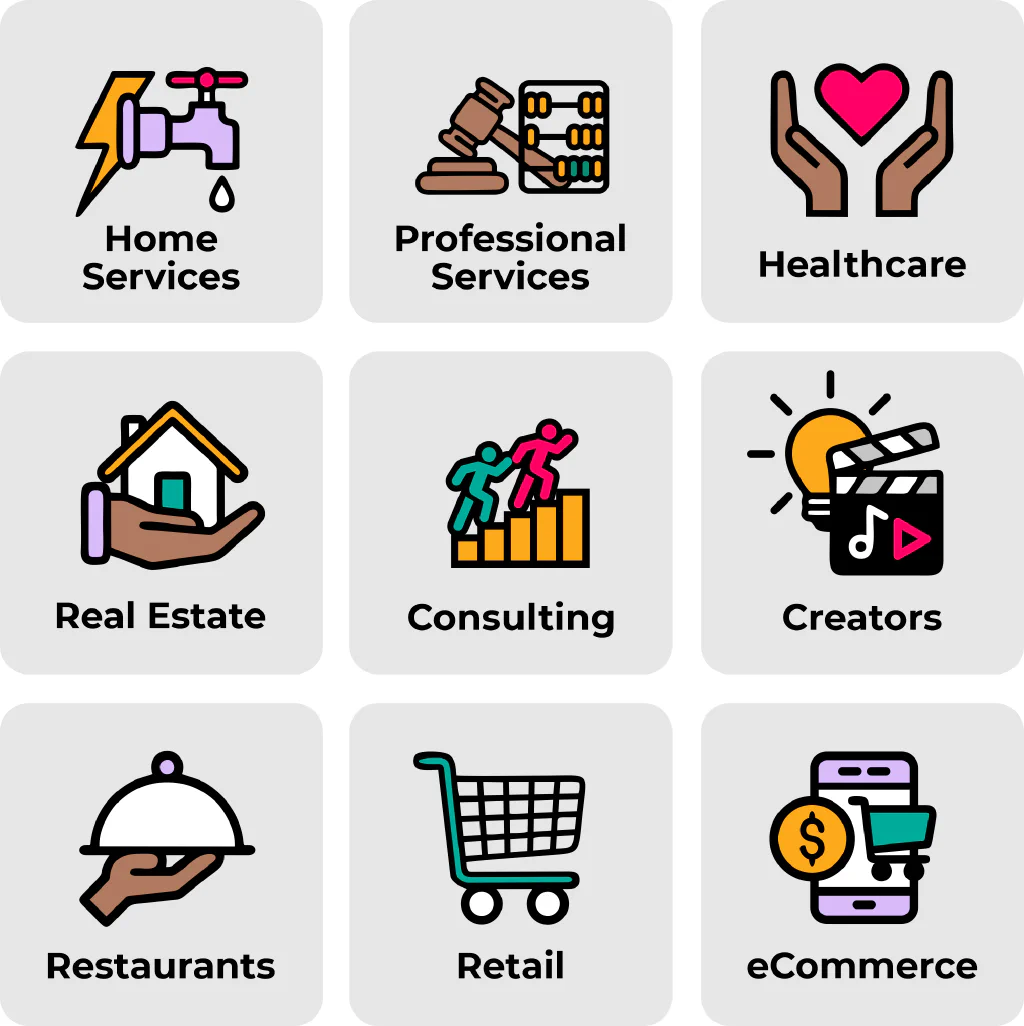
A finance sector prompt seeking stock market insights would be vastly different from a retail one focused on trending fashion items. It’s crucial to tailor prompts to industry-specific needs. Here are some examples of how ChatGPT can be used in various industries:
-
Home Services ( Plumbers, Electricians, etc.): ChatGPT can help write email campaigns that troubleshoot tips for common household issues.
-
Professional Services ( Lawyers, Accountants): Professionals can use ChatGPT to provide FAQs on their website.
-
Healthcare: Medical practitioners can create content for educational social media campaigns around healthy eating, exercise, or preventative health behaviors.
-
Real Estate: Agents can get marketing collateral for open houses, ideas for client gifts, or tips for staging homes.
-
Consulting: Consultants can use ChatGPT to put together pitches, format professional emails, or write blogs about best practices for their specific sector.
-
Creators: Artists, writers, and other creators can seek inspiration, tips, or feedback on their work – both for their own creatives or marketing their products.
-
Restaurants: Restaurant owners can get ideas for recipes, management practices, or marketing strategies.
-
Retail: Retailers can ask about inventory management, customer engagement strategies, or in-store signage copy.
-
eCommerce: Online sellers can get insights on optimizing their websites, digital marketing strategies, or understanding customer behavior.
Prompt Scope and Reusability #
Are you seeking a one-time solution or a repeatable action? A multi-use prompt can be likened to a single ad campaign for a specific event that can be reused again. For example: “Craft a catchy subject line for our summer sale email campaign”. This prompt can then be reused for any other sale just by replacing ‘summer sale’ with other events.
While one-time use prompts are prompts that you tend to only use once. For example, a marketing plan, a sales SOP, or a customer support SOP.
Build Your Prompt #
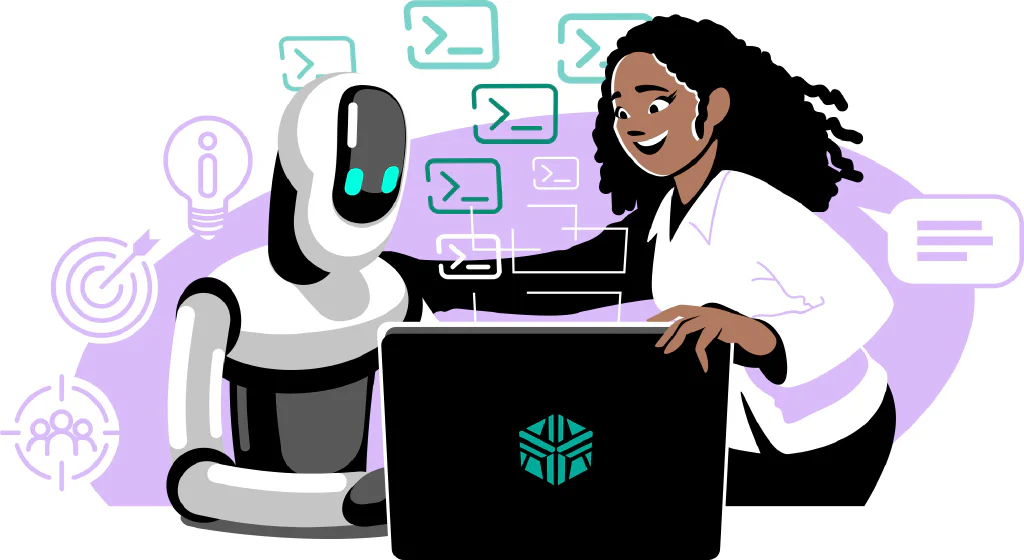
Creating effective prompts requires a thoughtful approach. Your goal is to craft a clear and concise set of instructions that produce your desired generated response.
The more specific, contextual, and comprehensive you are, the less likely your prompt results will require further iterations, clarifications, and human editing.
Imagine you run marketing for an eCommerce brand that specializes in fitness gear for kids. You’ve got a brand new kid-friendly water bottle. You need an informative yet enticing product description that will appeal to kids but resonate with parents.
Your new water bottle has the following value props and specifications:
Product details:
- Animal themed
- Glows in the dark
- Choke-safe Cap
Specifications:
- Volume: 300 ml (10.1 oz)
- Height: 15 cm
- Diameter: 6.5 cm
You could provide a vague prompt to ChatGPT like “Write a product description for a new kids’ water bottle” and get something like this:


- Does this description look great? Absolutely.
- Are there elements that you could pull from it for a real product description? You bet.
- Is it problematic? Big time.
Without any context, ChatGPT created details about your bottle that you did not provide.
- Made-up specifications? We’d have to talk to our manufacturers.
- Vibrant and playful graphics? Our bottles are solid colors.
- Comes with a set of colorful stickers? Great idea, but this isn’t a part of our product.
If we provide more specifics and context, we’ll get a better-tailored output. Then we can have a prompt that we can reuse for any future product descriptions.
Now imagine that you’ve reached out to the product team and collected all of the details for your water bottle. Here’s a comprehensive prompt that provides all of the contextual information needed to produce a killer product description:
Role:
Act as a product marketer for a kids’ fitness e-commerce store.
Context:
Our new water bottle, the Buddy Water Bottle, is specifically designed for young children aged between 3 and 8 years. The bottle comes with a volume of 300 ml, making it an appropriate choice to meet the hydration needs of young ones. Standing at a height of 15 cm with a diameter of 6.5 cm, it is compact enough to fit into school bags and lunch boxes. Moreover, its lightweight design (120 grams when empty) makes it easy for kids to carry it wherever they go.
Key Features:
- Animal Themes: Removable silicone sleeves featuring different adorable animal faces and ears.
- Hydration Tracker: Encourages children to drink water regularly with a small LED smiley face lighting up each time they meet their hydration goal.
- Glow-in-the-dark: Makes it easy for kids to find their bottle at night while adding an element of fun.
Benefits:
- Educational: The hydration tracker teaches kids the importance of regular water intake.
- Personalized: Offers an opportunity for kids to have their names or initials engraved on the bottle.
- Safe and Secure: A choke-safe cap ensures safety for the little ones.
Specifications:
- Volume: 300 ml (10.1 oz)
- Dimensions:
- Height: 15 cm
- Diameter: 6.5 cm
- Weight: 120 grams (when empty)
Care Instructions:
- Wash with mild detergent and rinse with warm water before first use.
- Not suitable for hot liquids.
- Hand wash recommended to maintain the integrity of the materials.
Task:
Write a product description for the e-commerce store that encompasses the following sections:
- Intro: Introduce the water bottle and its unique design tailored for young children.
- Key Features: Describe the three key features listed in the context above.
- Benefits: Discuss the three benefits listed in the context above.
- Specifications: List down the specifications using the details provided in the context above.
- Care Instructions: Provide the care instructions as noted in the context above.
Constraints:
- Avoid using technical jargon that might be difficult for the customers to understand.
- Do not mention any features or benefits not listed in the context section.
- Ensure the description portrays a friendly and inviting tone to appeal to both parents and children. Our brand voice is playful and nurturing, with a sprinkle of adventure in every word we craft.
Now let’s see the output:


The prompt’s format and instructions clearly detail the water bottle’s features and benefits, guiding the creation of a product description that is both detailed and true to the brand. It steers clear of complex words and sticks to sharing essential information in a fun, accessible manner that speaks directly to parents and young children. This is what we’re looking for in our outcome. This is how we’ll build our prompts.
Prompt Engineering Elements – The Anatomy of a Prompt #
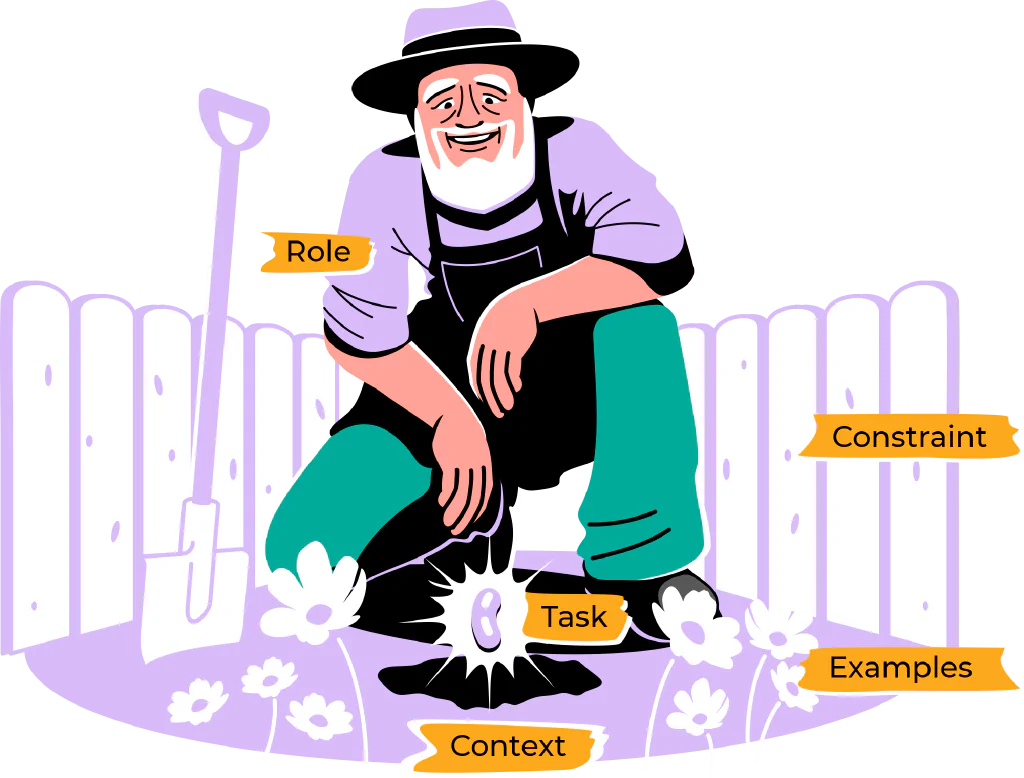
In designing an effective prompt for ChatGPT, we’ve found that using this prompt-building framework guided by a series of contextual elements gives the best results. You can use this framework as your checklist every time you build a new prompt.
Layering the following elements will provide ChatGPT with the all of information it needs to produce your desired outcome:
- Role: Defines the persona or capacity ChatGPT will embody, establishing the framework for a consistent and focused dialogue.
- Context: Furnishes the background details necessary to guide the conversation accurately, helping in creating a dialogue that is both relevant and grounded in the desired reality.
- Tasks/Objective: Outlines the specific aims the ChatGPT needs to achieve, making it a pivotal tool in guiding the generation process to align tightly with your strategic goals.
- Examples: Present a blueprint for ChatGPT, directing it to create outputs that align well with the envisaged format, thus serving as a practical guide in the prompt engineering process.
- Constraints: Put forth the boundaries within which ChatGPT should operate, averting off-course digressions and ensuring a focused, goal-aligned output.
Each element serves a distinct function: defining the role sets the tone, establishing the context provides a grounded setting, clarifying the task steers the focus towards the goal, examples guide the desired format, and constraints maintain the focus within predefined bounds.
Combining these elements allows for a richer, more guided interaction with ChatGPT, resulting in finely tuned responses to meet the user’s exact needs, and promoting a productive and successful engagement with the AI.
That’s why we’ve baked Roles, Tasks, Context, and Constraints into AIPRM’s Prompt Wizard: A basic template for beginners who are creating prompts for the first time.

Read more: How to Use AIPRM’s Prompt Wizard
This methodology leverages the full potential of the AI, facilitating an output that is both reliable and aligned with the user’s vision.
Let’s walk through each element in greater detail.
1. Role #

direction of the dialogue and govern the demeanor of the responses generated.
Why it’s important to the prompt:
By specifying a role, you essentially provide ChatGPT with a lens through which to view and respond to subsequent queries, setting a tone and perspective that is consistent throughout the conversation. Whether it’s adopting a formal tone as a news reporter or a friendly demeanor as a helpful assistant, defining a role brings a level of precision and personality to the conversation.
The role ensures that the output is not just mechanically accurate but also rich in context, character, and appropriate language nuances, ultimately resulting in a more engaging and fruitful interaction.
Examples:
- “Act as a social media marketing expert with extensive knowledge of the eCommerce industry.”
- “Assume the role of a content marketing strategist with a deep understanding of SEO principles and a background in promoting sustainable products.”
- “Embody a brand consultant specializing in influencer collaborations, possessing a rich portfolio in curating high-impact social media campaigns for lifestyle brands.”
- “Act as a digital advertising specialist, experienced in leveraging data analytics to optimize pay-per-click campaigns and enhance the online presence of technology startups.”
Pro-tip:
Be specific about the role you want the model to play. This helps in getting a more focused and relevant response.
2. Context #

Providing context in your prompt is pivotal in aligning the ChatGPT’s output with your specific expectations.
Why it’s important to the prompt:
Clear context is the backbone of effective communication, helping ChatGPT to fully understand the unique aspects of the topic you’re exploring. It steers clear of bland, one-size-fits-all responses, encouraging a response that is precisely tailored to your specific scenario.
Essentially, the right context acts as a guiding star, leading the AI to craft responses that are not just accurate but resonate deeply with the underlying theme, ensuring a conversation that progresses smoothly and meaningfully, grounded in a well-articulated foundation. It’s about setting a stage where every reply is finely tuned to mirror the exact requirements, orchestrating a dialogue that’s in perfect harmony with your expectations.
In the realm of marketing, especially for small business content creation, contextual guidance can be the cornerstone in generating insightful and target-oriented content. ChatGPT, armed with a well-defined context, can significantly enhance the efficacy and relevance of its output. The following are examples of context that could be pivotal:
Context Examples:
Target Audience: Specifying the demographic details such as age group, preferences, and geographical locations can help in crafting messages that resonate well with the intended audience.
- “Envision a group of consumers; females between the ages of 18-35, who predominantly reside in urban settings. These individuals harbor a strong preference for skincare products that are both natural and sustainable, having a keen inclination towards brands that emphasize eco-friendly packaging.”
Industry Trends: Offering insights into the latest industry trends and consumer behavior aids in creating content that is timely and aligned with market dynamics.
- “The current market is witnessing a substantial surge in interest towards home automation and energy efficiency. Being a tech startup in the smart home appliances sector, we aim to position ourselves as a frontrunner in offering advanced solutions that meet this rising demand. We need to underscore the energy-saving and convenience-enhancing attributes of our product line, thereby aligning with the prevailing industry inclinations.”
Brand Voice and Identity: Establishing the brand’s tone, values, and personality ensures the content remains consistent with the brand’s identity, fostering a strong brand presence.
- “Our bakery stands as a testimony to rich traditions and close-knit community values, offering products curated from cherished family recipes handed down through generations. We desire to evoke a sense of warmth and nostalgia through our brand voice. Create content that reflects our deep-rooted history and the authentic, time-tested recipes that are the hallmark of our bakery, fostering a connection steeped in trust and heritage.”
Campaign Objectives: Outlining the goals of the marketing campaign, be it increasing brand awareness, driving sales, or enhancing engagement, guides the generation process to stay focused on achieving the set objectives.
- “Our objective is to foster a vibrant community of book enthusiasts and augment foot traffic to our local bookstore. The cornerstone of our campaign revolves around enhancing engagement through a series of community events including author meets and book club sessions. Devise a strategy that encourages local residents to partake in these events, nurturing a space that beckons book lovers to congregate, share, and celebrate literature, thus gradually elevating the store’s patronage.”
Pro-tip:
Use your own brand documentation as a custom instruction or custom profile within ChatGPT. Have a version of your brand voice, company mission, product or service features, key differentiators, and value proposition that you can incorporate into your prompts for context.
3. Tasks #

When you are clear and detailed in telling ChatGPT what you want, it helps in getting responses that exactly fit what you had in mind. It’s like giving it a clear path to follow, helping you avoid sidetracks and save time.
Why it’s important to the prompt:
By going a step further and giving detailed instructions, you encourage ChatGPT to really understand what you want, giving back responses that are more in-depth and exactly what you were hoping for. This way, your conversation follows a neat and logical path, taking you exactly where you want to go, and making your marketing conversation focused and right on point.
Task Examples:
Sourdough Bread Blog Post:
- Craft a 1500-word blog post on the art of making sourdough bread. The article must cover the following:
- The rich history of sourdough bread making.
- The various health benefits of consuming sourdough bread compared to regular bread.
- A simple, step-by-step recipe that readers can easily follow to make their own sourdough bread at home.
- Maintain a warm and inviting tone throughout the article to engage readers and encourage them to try making the bread themselves.
Advertising Concepts for Hand-crafted Furniture:
- Develop five distinct advertising concepts centered around the theme of heritage and craftsmanship for a furniture business. Each concept must contain:
- A catchy headline to instantly grab the audience’s attention.
- A tagline that succinctly conveys the uniqueness and quality of the hand-crafted furniture.
- A detailed description of the visual elements that will accompany the headline and tagline, illustrating the tradition and craftsmanship involved in creating the furniture.
Community Gardening Workshop Guide:
- Create a comprehensive guide divided into ten chapters for individuals starting out in community gardening. Each chapter should cover a different foundational topic, including but not limited to:
- Soil preparation and its importance.
- A guide to choosing the right plants for the community garden.
- Organic methods to control pests and diseases.
- The guide should encourage collaboration and communal spirit, making readers excited about starting their community gardening journey.
Yoga Studio Video Script:
- Write a script for a 10-minute introductory video on the benefits of practicing yoga daily. The script should include:
- Personal anecdotes to create a connection with the audience.
- Visual descriptions of various yoga poses and their benefits.
- Practical tips and advice on how viewers can incorporate yoga into their daily routine.
- The script should have a calming and encouraging tone, enticing viewers to start their wellness journey through yoga.
Pro-tip:
Clearly outline the specific tasks you want ChatGPT to undertake, detailing the desired format and essential components to include in the output. This approach ensures that the results not only match your objectives but are finely tuned to your marketing needs. Going a step further, visualize the ideal response and work backward to devise a task that paves the path for ChatGPT to reach that precise destination.
4. Examples #

The opportunity to include examples in your prompts operates as a tool to calibrate the AI’s response to match the stylistic and contextual specifications you desire.
Why it’s important to the prompt:
Examples illustrate the tonality, structural components, and the thematic lane you envision for the content. This approach acts as a conduit to fine-tune the output, nurturing a more symbiotic understanding between the user and the AI, thereby promoting outcomes that are tightly aligned with the prompt’s intrinsic objectives.
Examples of Examples:
- Social Media Post: “Get ready for the summer with our all-new range of sunscreens – natural and skin-friendly. #SummerReady #SkinCare”
- Email Subject Line: “Unlock 20% Off Your Favorite Items – Today Only!”
- Call To Action for a Website: “Subscribe Now and Get Exclusive Access to Insider Deals!”
- Product Description: “Experience the invigorating freshness of our mint face wash, designed to give your skin a radiant morning glow.”
Pro-tip:
Include clear and straightforward examples in your prompt to show ChatGPT exactly what you’re aiming for. Think of this as giving it a template to work from; this will help in getting results that match your vision closely, saving you time and effort in the long run. Make sure your examples reflect the style and tone you want in the final output. It’s a simple way to set the bar for the quality and type of content you expect.
5. Constraints #

Including a detailed list of constraints in your prompt serves as a fence that delineates the boundaries within which ChatGPT should operate.
Why it’s important to the prompt:
This not only prevents the output from straying into undesired territories but also ensures that the content generated aligns flawlessly with your specific needs and preferences. By clearly stating what should be avoided or what must be included, you facilitate a more focused and relevant response, steering clear of generic or off-target results. This approach fosters precision and a clear pathway to achieving the exact outcome envisioned, making the most of ChatGPT’s capabilities to meet your needs adeptly.
Constraints can be drawn from industry guidelines, brand policies, or specific preferences of your target audience. It’s essential to articulate these restrictions clearly and unambiguously, to work effectively with ChatGPT.
Here’s a list of constraints to consider for your prompts:
- Word Limit: Specify a maximum or minimum word count for the response.
- Language: Request the response in a specific language or dialect.
- Format: Ask for the answer in a specific format, like a list, a poem, a dialogue, etc. (This can be in the task element as well)
- Time Period: Limit the information to a specific time frame (e.g., “only provide information from the 20th century”).
- Up-to-Date Information: Specify the use of the most recent and reliable data up to the knowledge cutoff date (September 2021).
- Legal Compliance: Demand adherence to legal norms, including not creating content that could be considered advice in legal, medical, or other specialized areas. (This could be contextual as well)
- Intentionally Avoid Specific Topics: Ask the model to avoid controversial topics or any other specific subjects.
- Tone: Specify a tone for the response, such as formal, casual, humorous, or empathetic.
- Reading Level: Direct ChatGPT to adjust the complexity of the language to suit a particular audience.
- Originality: Request unique content to avoid receiving generic or commonly used phrases.
- Point of View: Specify the point of view of the content. For instance – No First-Person References: Avoid personal anecdotes or first-person perspective for a more objective response. (This could be contextual as well)
- No Repetition: Ask the model not to repeat any information or phrases in its response.
- Brand Guidelines: Ensure adherence to brand-specific guidelines, including style and values. (This could be contextual as well)
- Region-Specific Content: Guide ChatGPT to create content that is suited for a specific geographical region or culture. (This could be contextual as well)
- Specific Vocabulary: Request the use of (or avoidance of) specific words jargon, or even emojis.
- Address Specific Audience: Instruct the model to write as if addressing a specific audience, like children, experts in a field, or beginners (e.g. “Explain to 5-year-olds” – This could be contextual as well)
- Avoid Figures of Speech: Ask the model not to use metaphors, similes, or idioms in its response.
Examples of Constraints:
- Word Limit: Specify a word range to maintain brevity or detail as required. For instance, “Keep the blog post between 600-800 words.”
- Tone: Dictate the emotional resonance of the content. E.g., “Maintain a friendly yet professional tone.”
- Target Audience: Clearly identify the demographic the content is designed for. For example, “Tailor the message for young adults aged 18-25.”
- Legal Considerations: Highlight any legal boundaries that must be respected. Such as, “Ensure the content complies with the GDPR regulations.”
Pro-tip:
Avoid overly restrictive constraints which can inadvertently narrow down the creative scope, leading to outputs that feel forced or unnatural. Simultaneously, to achieve a balance, ensure that constraints are explicitly stated to avoid generic responses; it can be beneficial to format them as concise bullet points, clearly delineating the boundaries within which ChatGPT should operate. Steer clear of common pitfalls while leveraging the full potential of the tool.
Now that you have a framework for building prompts, let’s work through an entire process of prompt creation. We’re going to start with an idea and desired output, work through our elements, test out our prompt, and put it into production.
You’ll be able to use this process every time you create a one-off prompt or one that your entire organization can use repeatedly.
Prompt Engineering Playbook #
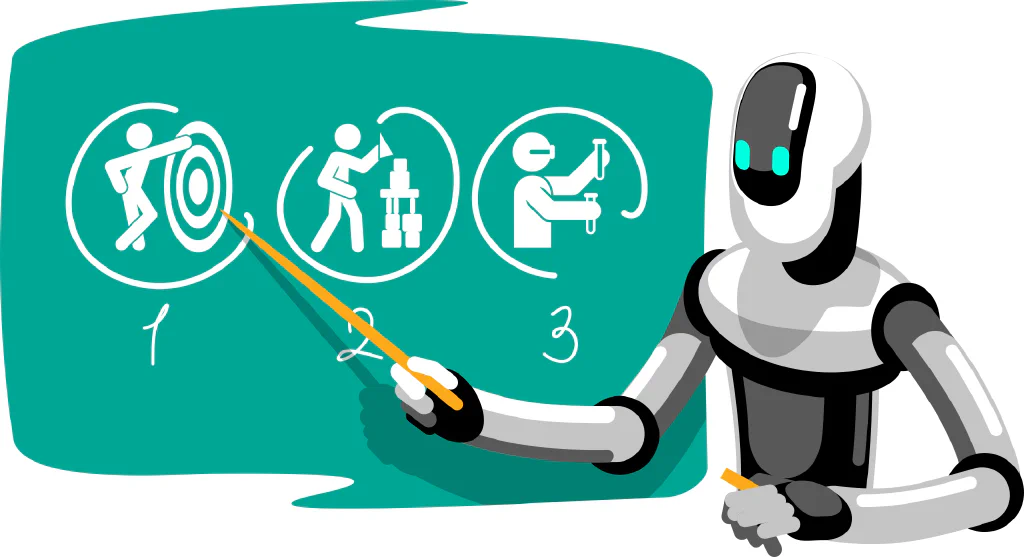
To clearly demonstrate our playbook, let’s design a specific use case for building a well-crafted prompt.
For this exercise, replace our example with your own industry, activity, and use case for a real challenge you’re dealing with. It can be a marketing campaign for a new service offering, a sales email to a prospect on the verge of closing, or even a customer support rep who needs to respond to a negative review.
Imagine that you’ve launched an eco-friendly shoe brand in San Francisco called “EcoSteps”.
You’re an eCommerce store that sells your nature gear nationwide.
You’re ready to test out a Facebook Ad Campaign for your newest shoe line. You have financial goals for the campaign, you know your target audience, and you have a set budget.
Here’s your high-level framework to consider:
Step 1: Define Your Goal #

Start with a clear goal in mind for your prompt. Ask yourself, what do you want this prompt to achieve with the prompt?
Whether it is creating website content, developing sales scripts, or analyzing online reviews, your goal will shape the direction of the prompt. Identify the specific tasks, context, and constraints involved.
Examples:
- Campaign Brainstorm: A prompt that generates campaign ideas for a winter clothing line with a cozy and warm theme.
- Social Media Posts: A prompt that creates engaging posts targeting young adults, without using internet slang.
- Product Descriptions: A prompt that drafts descriptions for a new line of eco-friendly products, adhering to a green and sustainable theme.
Pro-Tip: Don’t isolate the prompt creation process; two heads are indeed better than one. Establish a collaborative brainstorming session involving individuals from different facets of your business – from creative to technical experts – to pool in a diverse set of ideas and perspectives.
This practice encourages a well-rounded approach to prompt ideation, ensuring that the conceived prompt is rich in depth and caters to a broader audience spectrum, effectively leveraging the collective intelligence of your team.
Additionally, using a shared document or a brainstorming app can streamline the process and keep ideas organized and accessible to all stakeholders.
Step 2: Craft Your Prompt Elements Carefully #

Remember the elements that make up your prompt?
We’re going to walk through them one by one chronologically to build out your prompt. For each of these elements, copy and paste the fragment and add it to the end of your prompt.
Start with a blank Google Doc, a note, or any word processor of your choice.
Give your prompt a working title.
Build out a Prompt Template with your key elements:
Role:
Context:
Tasks:
Examples:
Constraints:
Keep the format spaced so you can easily edit and move around elements to get the result that you want in the end.
Build Your User Role #
Develop the right persona first so ChatGPT can speak your brand’s language perfectly.
For your small businesses, it’s all about tuning into the specific tastes and trends of your industry and audience. This means taking a deep dive into the unique aspects of your business niche to build a persona that truly understands and can expertly converse with your customers.
Remember, a well-crafted and specific persona is your ticket to creating a ChatGPT output that produces content with the exact tone, style, and knowledge base that your audience expects and appreciates.
Examples:
-
“Act as a Local Organic Food Marketeer.” Fashioning ChatGPT as a persona steeped in the organic food movement, well-versed with local farmer markets, and deeply knowledgeable about seasonal produce, sustainable farming, and clean eating trends. This persona could offer tips on the best ways to enjoy seasonal bounty or recipes that highlight fresh, local ingredients.
-
“Act as a Tech-Savvy Startup Advisor.” Configuring ChatGPT to resonate as a well-informed startup advisor who has their finger on the pulse of the latest tech trends, venture capital dynamics, and startup ecosystem. This persona could provide insights into lean startup methodologies, agile project management, or even guidance on securing venture funding.
-
“Act as a Community-Centric Fitness Coach.” Envisioning ChatGPT as a fitness coach who not only provides personalized workout plans and diet charts but also deeply integrates community events, local fitness challenges, and promotes a healthy lifestyle by leveraging local resources. This persona could perhaps offer advice on nearby trails for running enthusiasts or share updates on community yoga events.
By honing in on the specifics and weaving in the elements unique to your business niche, you craft a ChatGPT persona that isn’t just a virtual assistant but a virtual specialist, holding a wealth of knowledge tuned finely to the exact requirements of your audience.
Add Contextual Info #
To forge a perfectly formatted set of contextual information for your ChatGPT prompt, start by identifying the core facets of your business that resonate most with your target audience. These could be based on your business values, unique selling propositions, local community involvement, or the history and story behind your brand.
Don’t only include the tangible aspects such as products or services, but also the intangible elements such as brand tone and writing style that communicate your brand’s personality. Specify your target audience too; understanding who the prompt is catering to can significantly influence the output’s tone and content.
Structure this context clearly and logically, possibly in bullet points, to convey a rich, yet concise backdrop for the AI to base its interactions upon.
Examples:
-
Home-based Artisanal Soap Business:
-
Business Overview: A cottage industry championing hand-made, organic products.
-
Brand Tone and Writing Style: Friendly and warm, with a touch of homely charm in every communication.
-
Target Audience: Eco-conscious consumers looking for organic, hand-crafted products.
-
Community Engagement: Regular workshops on the benefits of organic products and how to make soaps at home.
-
Specialty Coffee Roastery:
-
Business History: Leveraging a rich heritage of coffee connoisseurship to bring exotic blends from around the world.
-
Brand Tone and Writing Style: Sophisticated and knowledgeable, appealing to the discerning coffee enthusiast.
-
Target Audience: Coffee aficionados seeking premium, ethically sourced beans and blends.
-
Unique Selling Proposition: Exclusive roastery tours offering insights into the delicate art of coffee roasting.
-
Local Fitness and Wellness Studio:
-
Business Overview: A community-centric hub offering a personalized approach to fitness and well-being.
-
Brand Tone and Writing Style: Encouraging and motivational, inspiring people to take charge of their health.
-
Target Audience: Individuals of all age groups looking to embrace a healthier lifestyle in a supportive environment.
-
Community Engagement: Free monthly health talks and workshops that foster community well-being.
Pro-Tip: Since much of your content may remain consistent across prompts, you can use AIPRM Custom Profiles to save time from entering this information repeatedly in every prompt. Save it as a Custom Profile instead.

Read More: AIPRM Custom Profiles
Arm yourself with a meticulously crafted contextual backdrop, merging hard facts with the soft nuances of your brand’s tone and target demographic, fostering a ChatGPT prompt grounded in depth and authenticity. Let’s curate interactions that are not just transactional, but a vivid reflection of your brand’s personality, forging connections that resonate and endure. It’s time to let your brand do the talking, eloquently and effectively.
Build Your Tasks #
The task forms the bedrock of your prompt, guiding ChatGPT to yield the desired results. Formatting is key; clear, structured tasks that follow a logical sequence will facilitate smooth, efficient, and fruitful engagements with ChatGPT.
Remember, the specifics are what matter here; the more detailed and structured your task is, the closer ChatGPT can get to meeting your objective effectively and efficiently (so you don’t waste as much time iterating). A well-designed task element not only aligns perfectly with your initial goals but steers the conversation in the right direction, ensuring a targeted and relevant output.
Task Examples:
For a Sustainable Clothing Line:
- Task: Develop a 3-month social media content calendar emphasizing our new line of sustainable garments. Include weekly thematic posts that highlight the environmental benefits of our products, and customer testimonials. Use vivid imagery and compelling narratives.
Community Organic Market:
- Task: Create a series of blog posts revolving around the journey of our organic products from farm to table. Detail the stories of our farmers, the benefits of organic produce, and include recipes using our fresh products. Each blog post should end with a call to action encouraging readers to visit our market.
Local Handmade Jewelry Artisan:
- Task: Design an email marketing campaign for the upcoming holiday season. Craft emails that tell the story behind each piece of jewelry, highlighting the craftsmanship and uniqueness. Include high-resolution images and links to our online store.
Pro-Tip: When creating the task element of your ChatGPT prompt, employ a ‘chain of thought’ methodology. Start with the broader objective and then break it down into smaller, detailed tasks, mapping out a logical progression of steps. This not only gives clarity to the AI but facilitates a well-structured and coherent output, helping you steer the direction of the conversation precisely where you envisage it.
It’s about articulating a vision, breaking it down, and then building it up, one structured task at a time.
Provide Examples #
Constructing example outputs to include in a ChatGPT prompt is a decisive move in obtaining the precise responses you desire. The examples you provide should encapsulate the tone, style, and format that you expect for the final output.
When the expected result is a large volume of content such as an extensive blog post or comprehensive documentation, it’s prudent to offer a snapshot — a compact yet vibrant illustration that embodies the broader objective while fitting within the scope of the prompt.
Don’t hesitate to draw inspiration from your existing company content or from brands with a similar voice in diverse industries. Leveraging proven strategies or tones can offer a robust foundation for your prompt.
Examples:
Newsletter Introduction – Fitness Trainer:
- Example Output: “Welcome to our vibrant fitness community! Our latest series of live-streamed sessions are crafted to offer personalized guidance right in your living room. Join us to experience a transformative fitness journey amidst a community of enthusiasts just like you!”
Product Description – Organic Skincare Brand:
- Example Output: “Indulge in the essence of nature with our newest face serum, a harmony of organic ingredients destined to rejuvenate your skin. Step into a world of ethical beauty where each product embodies a pledge to cruelty-free and sustainable skincare.”
Social Media Post – Small Town Café:
- Example Output: “Nestled in the comforting embrace of [Town Name], [Café Name] invites you to savor homemade delights paired with freshly brewed coffee. Every visit here is a warm hug, a celebration of community, and a testament to the joy of simple pleasures.”
Pro-Tip: While crafting the example element, think of it as a ‘mini masterpiece’; a glimpse into the larger picture that you aim to paint with your prompt. Ensure it is rich in detail, encapsulating the essence of your brand’s voice and the objective at hand.
If you are aiming for a longer output, provide ChatGPT with a snapshot that carries the core spirit of what the complete output should resonate with, guiding it to craft responses that are aligned with your vision, down to the finest detail.
It’s all about setting the right stage with a snippet that speaks volumes.
List Out Constraints #
Adding your constraints to your ChatGPT prompt acts as an important guardrail for the output. They function like a detailed brief to a creative team, providing critical parameters to work within and helping avoid undesirable avenues.
By setting clear boundaries such as tone, language choice, or even word count, you guide ChatGPT to create content that is in line with your brand’s guidelines and your audience’s expectations. It is a meticulous way to ensure that the generated content remains within the preferred scope while catering to the specified demographic or regulatory requirements.
Consider elements such as the appropriate reading level, adherence to legal norms, or the specific vocabulary that should be used, among others from the detailed list to aid in crafting your constraints. Revisit our list in the constraints section of the anatomy of your prompt above.
Constraint Examples:
Health Blog – Healthcare Startup:
- Constraints:
- Word Limit: 500-700 words
- Language: English, medical terminology simplified for general audience
- Tone: Empathetic and informative
- Legal Compliance: Adherence to healthcare norms, no medical advice
- Specific Vocabulary: Avoid using medical jargon
- Originality: Unique content avoiding commonly used phrases
Social Media Campaign – Organic Skincare Brand:
- Constraints:
- Format: List of benefits with emotive descriptions
- Language: English with a youthful, vibrant dialect
- Tone: Casual and exciting
- Brand Guidelines: Highlighting the natural and cruelty-free aspects
- Region-Specific Content: Tailored for an urban demographic
- Specific Vocabulary: Inclusion of terms like “organic”, “cruelty-free”
Product Description – Artisanal Craft Shop:
- Constraints:
- Word Limit: 100-150 words
- Tone: Artistic and elegant
- Originality: Distinct descriptions for each product
- Brand Guidelines: Highlight the handcrafted nature of the products
- Reading Level: Simple, yet sophisticated
- Specific Vocabulary: Words such as “artisanal,” “handcrafted,” “unique”
Pro-Tip: As you draft and test your ChatGPT prompt, pay attention to the nuances of the generated responses. This iterative process might bring to light additional constraints that can enhance the prompt’s efficiency and output quality.
By keenly analyzing the AI’s responses, you can identify areas where further specificity in constraints could be beneficial. It’s a progressive refinement strategy, where each iteration brings you closer to perfection.
The goal is to find a balanced set of constraints that align well with your brand without stifling the creativity of the generated content. It’s about forging a harmonious dance between guidance and innovation.
Step 3: Quality Assurance – A Reliable Prompt Testing and Iteration Process #
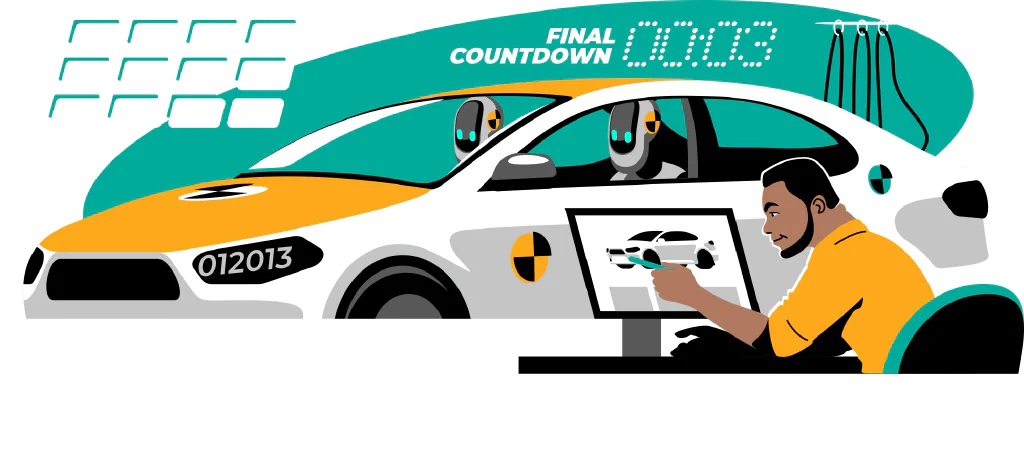
If you are crafting a prompt for multiple uses or for other users. Testing the prompt is important as the prompt will rarely produce your exact expectations on the first try. They also rarely produce the exact same output. A slight change in the prompt can give wildly different outputs.
Let’s walk through how to iterate on your prompts and improve them.
How to Scientifically Test Out Your Prompts #
Crafting a prompt that works efficiently time and time again is key to leveraging the power of ChatGPT for your small business. It’s all about striking the right balance between detail and flexibility, ensuring your team can use it seamlessly in various scenarios. The scientific approach to achieving this is through a methodical testing process where you iteratively refine your prompt based on real results.
Start with running your drafted prompt through at least 5-7 test cycles. It gives a substantial initial insight into how your prompt performs. Focus your evaluation on these vital aspects:
-
Test Rounds: 5-7 initial cycles
-
Criteria to Assess:
- Relevance: Does the output align with the question or task at hand?
- Accuracy: Are the details factually correct and up-to-date?
- Tone: Is the tone consistent and suitable for your brand?
- Language: Does it use appropriate language and stick to any defined constraints?
- Originality: Are the responses fresh and unique, or do they fall into repetitive patterns?
- Formatting: Is the output in a usable format, or does it require substantial editing? Keep an eye out for any patterns in the output; they can be your cue for fine-tuning the prompt further.
Finally, when your prompt starts delivering the right results consistently across your chosen criteria, it’s a sign that it’s ready to be deployed by your team. This “ready-to-go” prompt should produce responses that nail the brief almost every time, meeting your standards without needing frequent adjustments. It’s not just a time-saver; it’s a tool that stands ready to bring your team’s creative and strategic initiatives to life, empowering them to deliver quality content swiftly and confidently.
How to iterate on your prompts to get exactly the output that you want #
Let’s see this iterative process in action. Picture a small business that operates a local organic juice bar. The marketing team drafts the following comprehensive prompt to ChatGPT to help generate content for their upcoming social media campaign:
Prompt:
- Role:
- You are a vibrant and health-conscious social media manager for our juice bar.
- Context:
- Business: Local organic juice bar
- Brand Voice: Fresh, upbeat, health-conscious
- Target Audience: Local residents aged 20-35, health enthusiasts
- Task:
- Create a series of Instagram post captions that promote our new line of immunity-boosting juices.
- Examples:
- “Boost your day the organic way with our new line of immunity juices!”
- “Meet your new morning routine staple – our all-natural immunity boosters!”
- Constraints:
- Word Limit: Each caption should be between 5-15 words.
- Tone: Casual yet passionate about healthy living.
- Originality: The content should be fresh and not resemble the examples too closely.

Upon evaluating the output, the team observes that while the captions adhere to the word limit and tone, they lack the vibrant and upbeat energy envisioned for the brand’s voice. The outputs feel somewhat generic and don’t fully communicate the fresh and health-conscious spirit of the juice bar.
Strategy to Improve:
- Role: The role could be fine-tuned to be a bit more lively by specifying that the social media manager is not just vibrant but also deeply in tune with the latest health trends and has a knack for catchy phrases.
- Task: It might be beneficial to include a directive that emphasizes the unique selling point (USP) of the juices, perhaps mentioning their organic nature or specific health benefits.
- Examples: Offer examples that are more aligned with the fresh and upbeat voice that the brand is aiming for, and that leverage the USP more effectively.
- Constraints:
- Originality: Stress the importance of creating content that doesn’t just avoid resembling the examples, but that also avoids generic phrases seen commonly in health and wellness marketing.
We hope the revised prompt might encourage more vibrant, original, and brand-aligned responses from ChatGPT, helping to better capture the spirit of the juice bar and resonate with its target audience.
Taking into consideration the improvements outlined, let’s draft a more energized and detailed prompt to foster a set of catchy and original social media captions.
Improved Prompt:
- Role:
- You are a social media manager who is a health enthusiast with a knack for catchy phrases, always on the pulse of the latest health trends. You have a vibrant energy that is in sync with our fresh and upbeat juice bar.
- Context:
- Business: Local organic juice bar
- Brand Voice: Vibrant, fresh, and passionately health-conscious
- Target Audience: Local residents aged 20-35, health enthusiasts
- Task:
- Create a series of captivating Instagram post captions that vividly communicate the unique benefits of our new line of immunity-boosting juices, which are sourced from 100% organic, farm-fresh ingredients.
- Examples:
- “Jumpstart your morning with a burst of organic goodness! 🌞 #FarmFreshFlavors”
- “Elevate your wellness routine with our vibrant, immunity-boosting juices. 💪 #OrganicBoost”
- Constraints:
- Word Limit: Each caption should be between 5-15 words.
- Tone: Maintain a casual yet impassioned tone that resonates with health enthusiasts.
- Originality: Be creative! Craft captions that are not only distinct from the examples but also steer clear of generic health and wellness phrases.
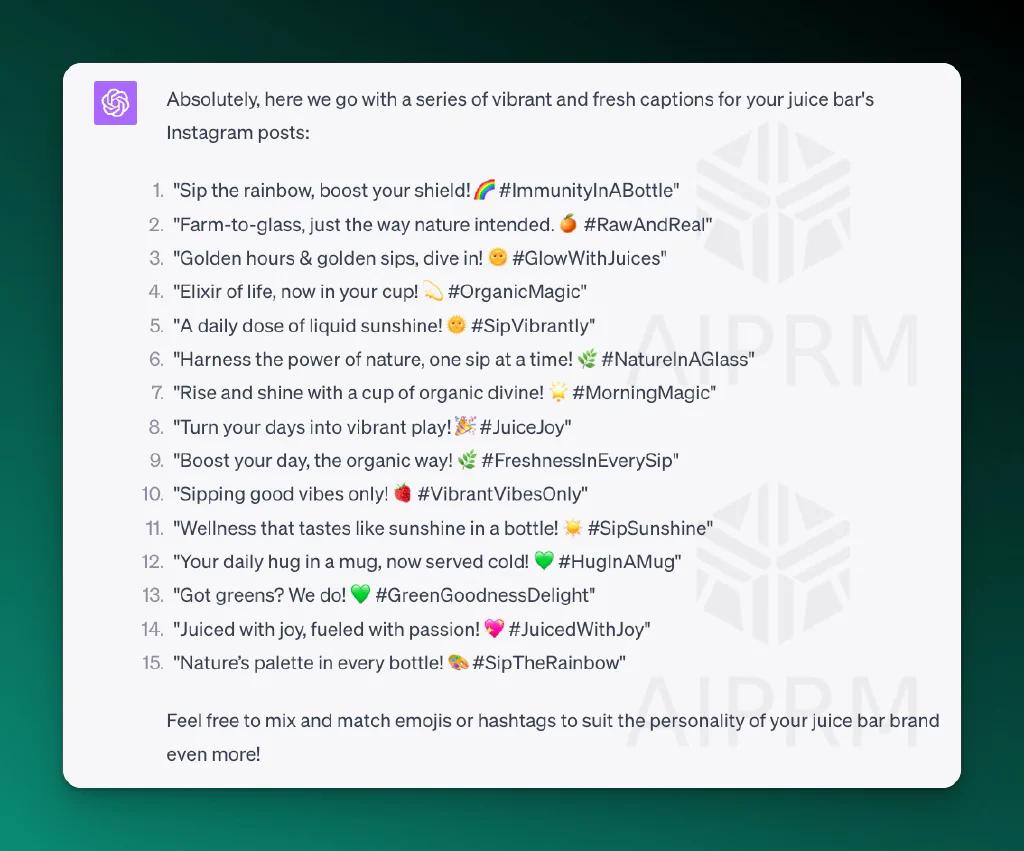
With the improved prompt, the output now embodies the vibrant and passionate brand voice, creatively showcasing the USP of the juices.
The captions are engaging, utilizing imaginative phrasing and hashtags to allure the targeted audience, thereby aligning perfectly with the intended fresh and upbeat vibe. This approach guarantees a series of Instagram posts that are not just promotional but a vivid representation of what the brand stands for.
Want an advanced tool to improve your ChatGPT usage?
Utilizing AIPRM’s Power Continue feature can fundamentally transform your experiences with ChatGPT by offering a more streamlined and efficient approach to crafting prompts. Power Continue accommodates in-conversation modifications, empowering you with six pre-made functions that can be invoked to refine the output further. These functions include:
- Clarify: To attain greater detail or finer points on a topic.
- Exemplify: To generate illustrative examples that illuminate main ideas.
- Expand: To obtain a more detailed exposition of the subject.
- Explain: To foster simpler and more accessible explanations.
- Rewrite: To solicit a fresh perspective or a new approach to the matter at hand.
- Shorten: To distill responses to their essential, most informative core.
As a Pro plan user, you have the privilege to innovate beyond the given functionalities, designing your unique Power Continue functions that add a more profound layer of specificity to the conversational dynamics. The custom functionalities could comprise:
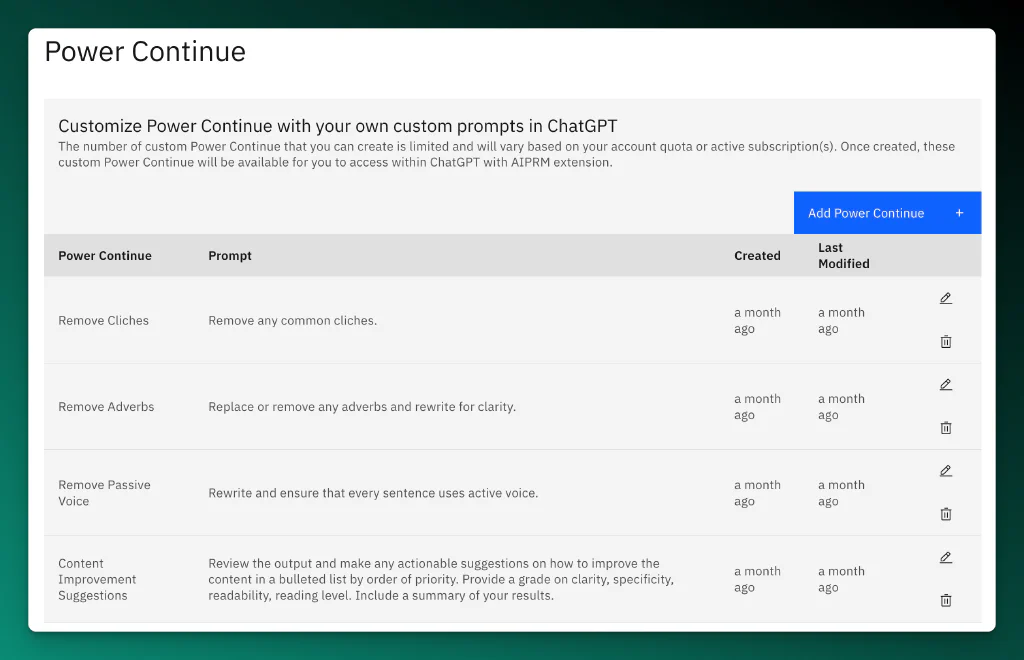
- Your own custom Prompt Grader: This function could be designed to analyze and provide feedback on your prompt, helping you to refine it to achieve better responses with your own criteria.
- Inspiration Injector: Post output, this function can be employed to infuse a burst of creativity or fresh perspectives into the existing content.
- Thematic Deep Dive: This one can be harnessed post output to guide ChatGPT to delve deeper into specific themes or nuances, enriching the content with deeper insights and facets that were perhaps untouched.
By incorporating AIPRM, a cutting-edge browser extension optimized for Large Language Models like ChatGPT, you empower your business with a repository of ready-to-use prompts and an environment fostering collaborative ingenuity. It’s not just about prompt generation; it’s about crafting a narrative that precisely meets your expectations, each time and every time.
Advanced – Creating Variables for Reusable Prompts #

Leveraging AIPRM’s variable feature can significantly reduce the time spent on crafting individual prompts for different contexts. Essentially, this tool allows for the creation of a master template with designated variable sections, which can be modified swiftly to suit various scenarios, thereby negating the need to build a new prompt each time.
Imagine the ease it brings: instead of crafting a brand new prompt, simply change the descriptive variables to match the new context.
Read More: How to Use Variables in Prompts with AIPRM
Here is a flexible ChatGPT prompt designed for a small business specializing in crafting artisanal candles to generate a series of engaging social media posts (utilizing AIPRM’s Variable Format):
Role:
Assume the role of a social media strategist tasked with amplifying the presence of “Enlighten Candles,” a brand renowned for its artisanal candles handcrafted from natural ingredients.
Context:
Enlighten Candles is launching a new series called “[VARIABLE1],” which showcases candles inspired by [VARIABLE2]. This new collection is available to candle enthusiasts in [VARIABLE3]. The post should underline the careful craftsmanship and natural ingredients that go into each candle.
Task:
Craft a vibrant social media post for [PROMPT] that vividly describes [VARIABLE4] from the new series. Use compelling language to draw attention to its unique characteristics and the sensory experience it promises to deliver. Include mentions of the following details: [VARIABLE5]. Encourage potential customers to explore the collection and make a purchase.
Example:
- Open with a captivating description of the candle’s appearance and fragrance, touching upon the inspiration behind it.
- Highlight the natural ingredients and the artisanal craftsmanship that differentiate our candles from others.
- End with a call-to-action that encourages viewers to [VARIABLE6].
Constraints:
- The post should be visually rich, encouraging viewers to imagine the sensory experience the candle offers.
- Maintain a post length between 50 and 100 words to ensure it is easily digestible yet detailed enough to entice potential customers.
- Incorporate a hashtag strategy, utilizing up to 3 relevant hashtags to enhance the post’s visibility.
[VARIABLE1:Series name:Specify the series name],[VARIABLE2:Theme:Specify the theme — e.g., different seasons, classic literature, or famous artworks],[VARIABLE3:Region:Specify the region — such as nationwide or specific states],[VARIABLE4:Featured Candle Name:Specify Featured Candle Name][VARIABLE5:Feature Candle Description:Add the description of the Featured Candle],[VARIABLE6:Call To Action:Specify the Desired Call To Action for the Email]

In the example above, [PROMPT] is the final variable you use to submit the prompt. In this case, it would be used to select a social media platform.
Let’s say we want to use this prompt multiple times to create different social posts for each of our featured candles. In this case, we’d want to vary the context and examples.
Without AIPRM, you would have to do this manually. Copy and paste the prompt. Next, replace the context part and the example part manually. Repeat the steps to use it again.
With AIPRM, you can create a template and specify certain parts as variables that you can just type into when reusing the prompt.
This methodology not only assures consistency but also fosters flexibility, allowing your business to swiftly adapt to varying needs with precision and efficiency. It’s a straightforward strategy to optimize ChatGPT utility, blending customization with convenience for notable results.
You can actually customize the variables to include dropdown options as well to make things even more streamlined for you or your team:
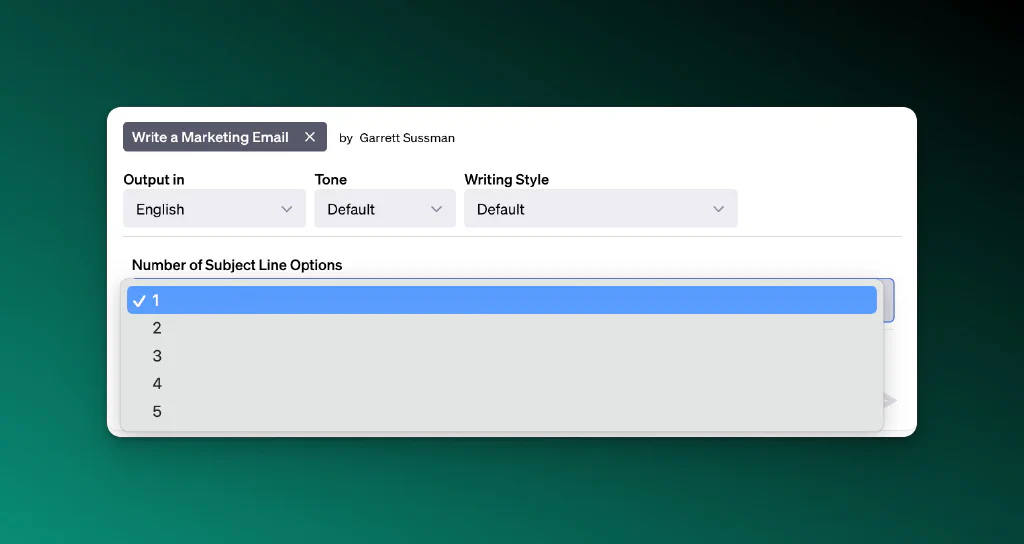
Also, the template will be saved in your library which makes finding the prompt and reusing it easier. On the other hand, If you do it manually, you’d need to dig through your chat history to find the old prompt that you used.

With your AIPRM prompt library, you can organize and manage all your prompts for easy access. A well-organized prompt library accelerates your workflow and ensures consistency.

10 Prompt Engineering Advanced Tricks #
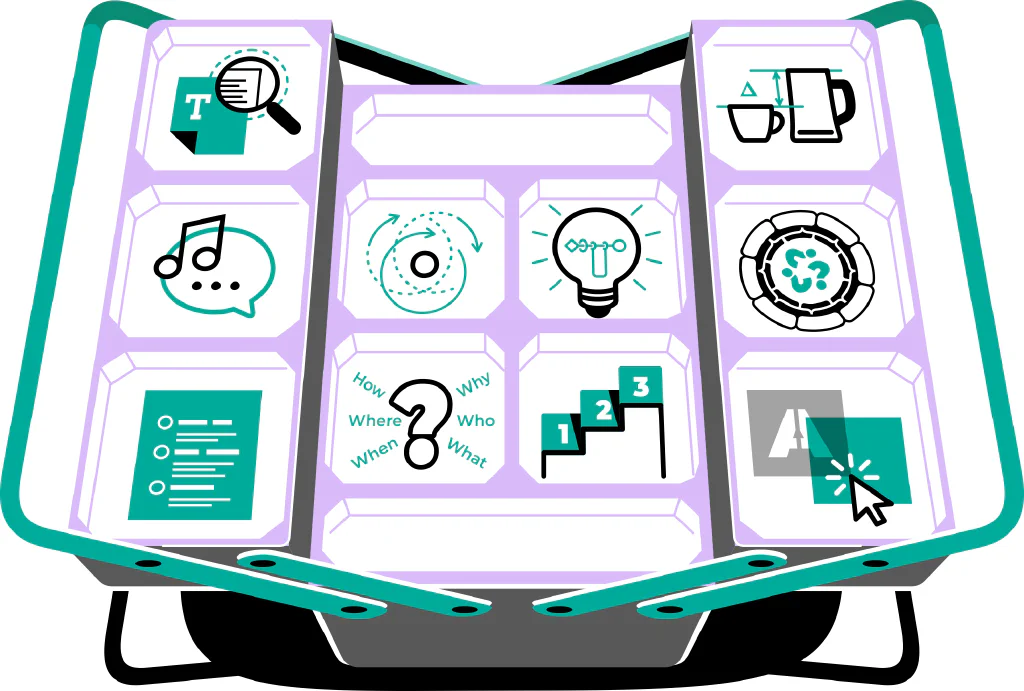
1. Utilize Inferred Context #
Frame your prompt in a way that leverages inferred contexts, subtly hinting at the expected outcome through the structure and wording of the prompt itself.
Example:
Prompt for a team brainstorming session: “Given our recent discussions on expanding into eco-friendly packaging, how can we integrate this initiative into our marketing strategy while emphasizing our continued commitment to sustainability?”
2. Emotional Tone Tagging #
Include a tone tag at the end of your prompt specifying the emotional tone you wish the response to carry (e.g., “[Tone: Enthusiastic]”).
Example:
“Craft a response to a customer inquiry about delayed shipping, maintaining a tone of empathy and understanding while providing reassurance [Tone: Empathetic].”
3. Explicit Formatting Instructions #
Include explicit instructions on how you want the answer to be formatted.
Example:
“Task: Please list the top 5 potential benefits of our new loyalty program for customers. Provide the answer in bullet points, each followed by a brief explanation.”
4. Context Reiteration #
To ensure the most important points are fresh in the AI’s context window, reiterate the key aspects of your query at the end of the prompt.
Example:
“Considering our emphasis on quality and customer satisfaction, can you devise a strategy to garner more positive reviews, ensuring to maintain our brand’s reputation for quality and customer satisfaction?”
5. The 5W1H Method #
Use the “5W1H” method to build comprehensive prompts by including Who, What, When, Where, Why, and How in your prompt structure.
Example:
“Context: In developing our new product line, consider:
- Who our target audience is,
- What their needs are,
- When the best time to launch is,
- Where we should focus our marketing,
- Why this product line will succeed,
- and How we can ensure its success.”
6. Solution-Focused Prompting #
Tailor your prompt to be solution-focused, steering towards constructive and problem-solving responses.
“Context: Given the current challenges of limited in-store interactions due to the pandemic, how can we optimize our website to offer a more interactive and engaging customer experience?”
7. Encourage Step-by-step Responses #
Request a step-by-step guide or explanation to foster detailed and structured responses.
**Example: **
“Task: Outline a step-by-step strategy for utilizing social media to increase engagement with our existing customer base and to attract new customers.”
8. Analogies and Comparisons #
Encourage the usage of analogies or comparisons in the responses to create rich and vivid descriptions or explanations.
Example:
“In explaining our new app’s user-friendly interface, can we draw comparisons to popular easy-to-use apps to help potential users understand its simplicity?”
Note: Sometimes ChatGPT can rely on the same analogies, so make sure to specify that you want unique and original analogies.
9. Socratic Questioning #
Use Socratic questioning to encourage deep thinking and detailed responses from the AI, facilitating an exploration of underlying concepts or assumptions.
Examples:
“What are the underlying assumptions we are making about our target audience’s preferences and how can we validate these assumptions through market research?”
10. Leveraging Templates Effectively #
When using a tool like AIPRM, make the most of the 1-Click Prompt Templates to streamline your content generation process by adapting the templates to suit the specific needs of your prompt.
Build Your Prompt Library #

Creating a structured, accessible, and functional prompt library can be a turning point in your business strategy. Not only does it streamline your operational processes, but it also brings a coherent voice to your brand. Here’s how you can build a versatile prompt library for your small business:
Step 1: Gather Essential Business Information #
Having key business information at hand is instrumental when crafting prompts for ChatGPT.
Integrating core details such as your brand voice, mission statement, and specifics about your products or services ensures that the generated content is tightly aligned with your business ethos.
It cultivates a unified communication strategy, ensuring that all outputs, whether they are for marketing, sales, or customer support, resonate well with your audience by embodying the unique characteristics and values of your brand.
You not only foster trust and reliability through consistent messaging but also streamline your content creation process, enhancing efficiency and reducing the room for error.
Objective: To create a foundational repository of content that defines your brand.
- Mission Statement: Document your business mission clearly.
- Business Details: Compile detailed information about your business.
- Brand Voice: Define the tone and style of your brand’s communication.
- Product/Service Details: Compile detailed descriptions of your products or services.
Step 2: Build and Find the Ideal Prompts #
Developing a company-specific prompt library for ChatGPT means gearing the AI towards generating content that directly caters to the nuanced demands and unique selling points of your business.
It’s not just about maintaining brand consistency; it’s about fine-tuning the responses to echo the specific values, goals, and strategies that your business holds central.
Whether it’s addressing the detailed queries of a niche customer base or drafting communications that highlight rare product features, customized prompts enable your team to leverage AI generation efficiently, tapping into precise language and targeted approaches that standard responses can’t offer.
This strategy doesn’t just save time; it crafts responses that feel genuinely “you”, offering a tailored, smart, and agile extension to your team’s efforts in communicating what makes your business one-of-a-kind.
Objective: To develop a library of prompts that resonate with your brand.
- Existing Libraries: Explore resources like AIPRM’s Prompt Library for pre-built prompts.
- Custom Prompts: Don’t shy away from creating prompts that specifically cater to your business needs.
Read More: How to Create a List in AIPRM
Step 3: Enhance the Selected Prompts #
Incorporating variables in your customized ChatGPT prompts is a dynamic way to ensure a responsive and adaptive communication strategy, one that caters to real-time, fluctuating business scenarios and customer needs.
It goes beyond standardization, bringing a layer of personalization and context-aware adaptability to AI-generated content, which can be integral in addressing the distinctive aspects of your business offering.
Besides, fostering a feedback loop with your team not only brings diverse perspectives and insights to the table but also refines the prompt efficiency iteratively, driving a synergy between AI assistance and human expertise to continually enhance output quality, align with specific goals, and resonate authentically with your audience.
Objective: To mold prompts that are adaptable and reusable.
- Variable Integration: Modify prompts to include variables, making them versatile for different contexts.
- Feedback Loop: Regularly collect feedback on the prompt’s efficacy and make necessary adjustments.
Step 4: Organize and Centralize the Prompt Collection #
Establishing a centralized repository for your prompt library is not just an organizational step, but a strategic one, fostering a hub of shared understanding and uniformity in communication across your business spectrum.
This approach eliminates the clutter of disjointed narratives and conflicting tones, providing a single source of truth that reflects your brand’s core values and mission unequivocally.
An organized library facilitates quick and easy access to pre-vetted, high-quality content, reducing the decision fatigue associated with choosing the right words while ensuring the maintenance of a coherent and powerful brand voice in all communications.
Objective: To have a single, accessible repository for all your prompts.
- Digital Platforms: Leverage platforms like AIPRM to organize your prompts systematically.
- Ease of Access: Ensure the platform allows for easy access and utilization by all team members.
Step 5: Team Training and Implementation #
Providing your team with comprehensive training and clear guidelines on prompt usage is a pragmatic step towards leveraging the full potential of your ChatGPT tool. It ensures that every team member can utilize the prompt library optimally, extracting precise responses aligned with the company’s objectives and standards.
Read more: How to Create a Team in AIPRM
Training facilitates a smooth, error-free usage of AI, safeguarding against miscommunications and fostering a proficient workforce that can swiftly handle a range of tasks with consistent excellence.
Practical guidelines act as a ready reference, empowering team members to effectively navigate the library, save time, and achieve desired outcomes with every prompt used, maximizing both efficiency and effectiveness in business communications.
Objective: To foster a culture of efficiency and consistency in communication.
- Training Sessions: Hold sessions to train your team on using the prompts effectively.
- Usage Guidance: Provide clear guidelines on when and how to use each prompt to maintain brand coherence.
Crafting a tailored small business Prompt Library is like having a powerhouse of on-brand, ready-to-use responses at your disposal, significantly simplifying your team’s day-to-day communications. It’s your go-to resource that embodies your business’s voice and values perfectly.
Once your playbook is in action, it’s vital to keep it fresh and aligned with your business’s heartbeat.
Make it a regular habit to revisit the library, integrating the latest insights, feedback, and trends to ensure your responses remain spot-on, resonating strongly with your audience.
It’s more than a one-off task; it’s about nurturing a living, evolving tool that keeps your business communications sharp, authentic, and effective, adapting seamlessly as your brand grows and evolves.
The Future of Prompt Engineering #
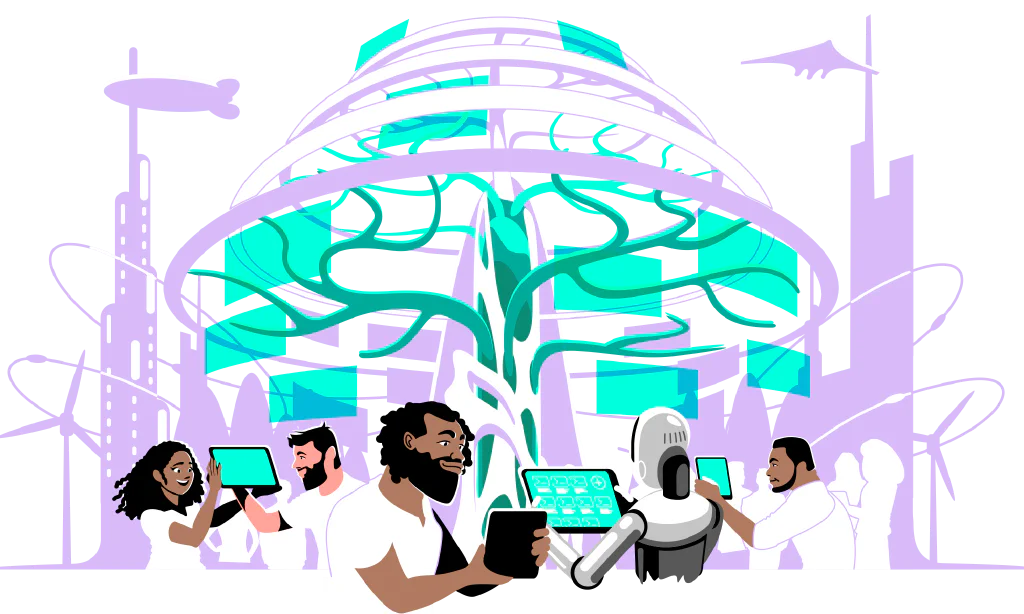
As we anticipate AI disrupting the digital landscape of every industry, it’s clear that the management of AI tools will become a pivotal role.
While these tools might evolve to be more adept at generating prompts for themselves, the human touch remains indispensable. Just as today’s workforce needs to be computer literate, tomorrow’s professionals might need to be proficient in creating effective prompts for AI.
Regardless of the advancements, communication skills will remain paramount, both for human-to-human and human-to-AI interactions.
To stay competitive in this field. It’s important to keep up to date with the latest prompt techniques and LLM development.
Take Action with AIPRM #
To experience the power of prompt engineering firsthand, you try out AIPRM’s free browser extension. Explore its features, including its prompt library, live crawling, custom profiles, creating variables in prompts, and more. Use these features to enhance your business further with AI.
Prompt engineering is a skill that can greatly enhance small business operations through effective interactions with language models. By understanding the principles of prompt creation and leveraging tools like AIPRM, businesses can achieve more accurate, relevant, and valuable outputs from these powerful AI-driven tools.
